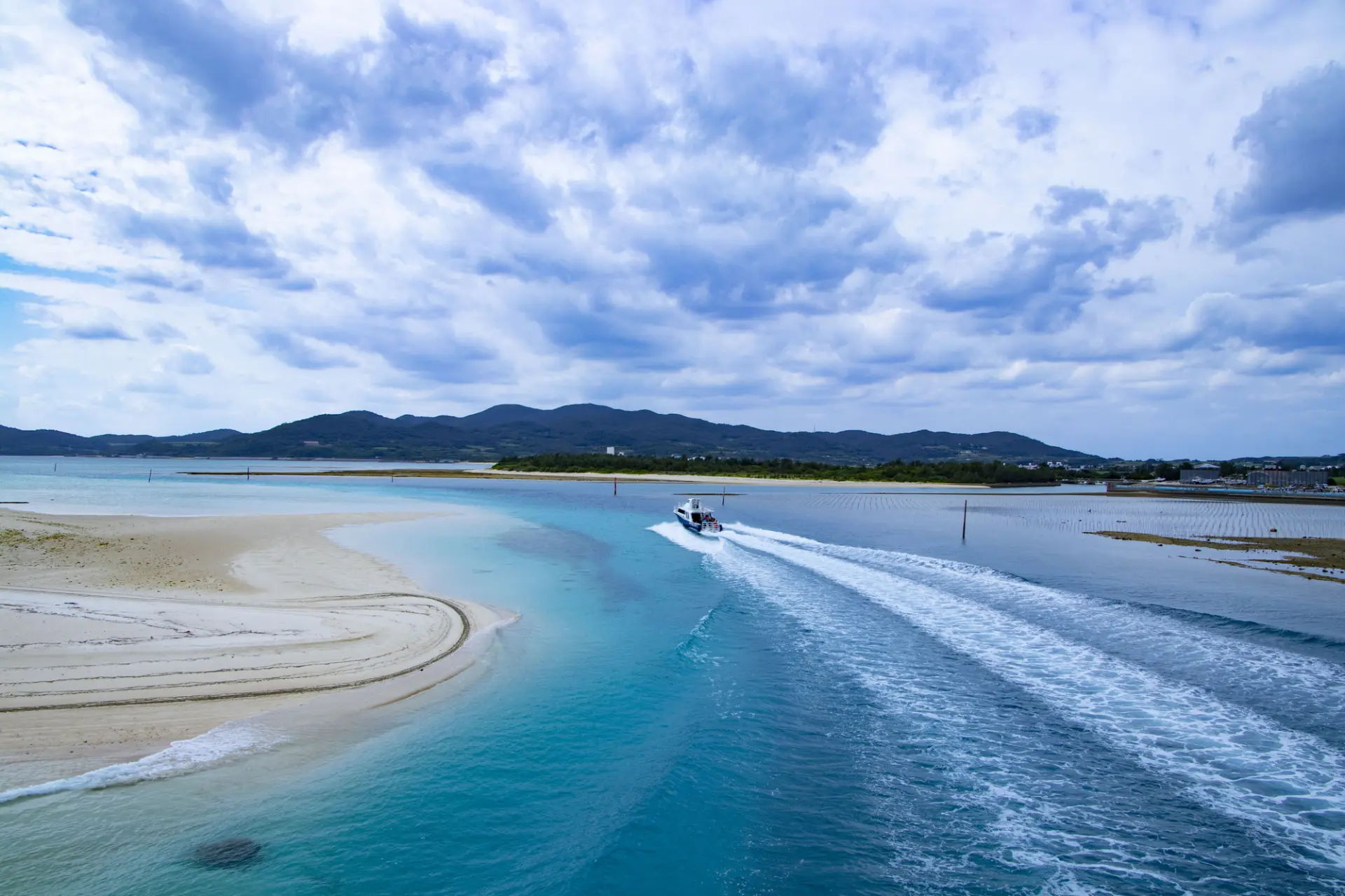
Kumejima Travel Guide: Discover One of Okinawa’s Most Beautiful Remote Islands
Kumejima, a tranquil remote island floating off the west coast of the Okinawa Main Island, moves at a laid-back island pace.
Everywhere you go, the original scenery of Okinawa remains, offering visitors soothing comfort and fresh discoveries.
From Hatenano-hama-an emerald-green sandbank famed as “the most beautiful in the East”-to its natural scenery, history and culture, and encounters with flora and fauna, Kumejima is packed with sights you’ll only find here.
This article introduces Kumejima’s appeal together with recommended sightseeing spots and local specialties.
We’ve organized this guide so even first-time visitors can have moving experiences-use it as a reference as you tour the island.
What Kind of Place Is Kumejima?
Kumejima belongs to Okinawa Prefecture and is a remote island located about 100 km west of the Okinawa Main Island, in the East China Sea.
It is the fifth-largest island in the prefecture by area, and almost the entire island is designated as a prefectural natural park.
The terrain features gentle rolling hills with varied relief, and the climate is mild and comfortable year-round.
Kumejima’s charm lies in its untouched natural environment, surrounded by beautiful sandy shores and coral reefs.
Its crystal-clear seas and white-sand beaches are among the finest in Japan, and the island has been called “Kumi no Shima” since the Ryukyu Kingdom era.
Diverse attractions such as marine sports, historic sites, and cultural experiences are scattered around the island, offering no shortage of highlights.
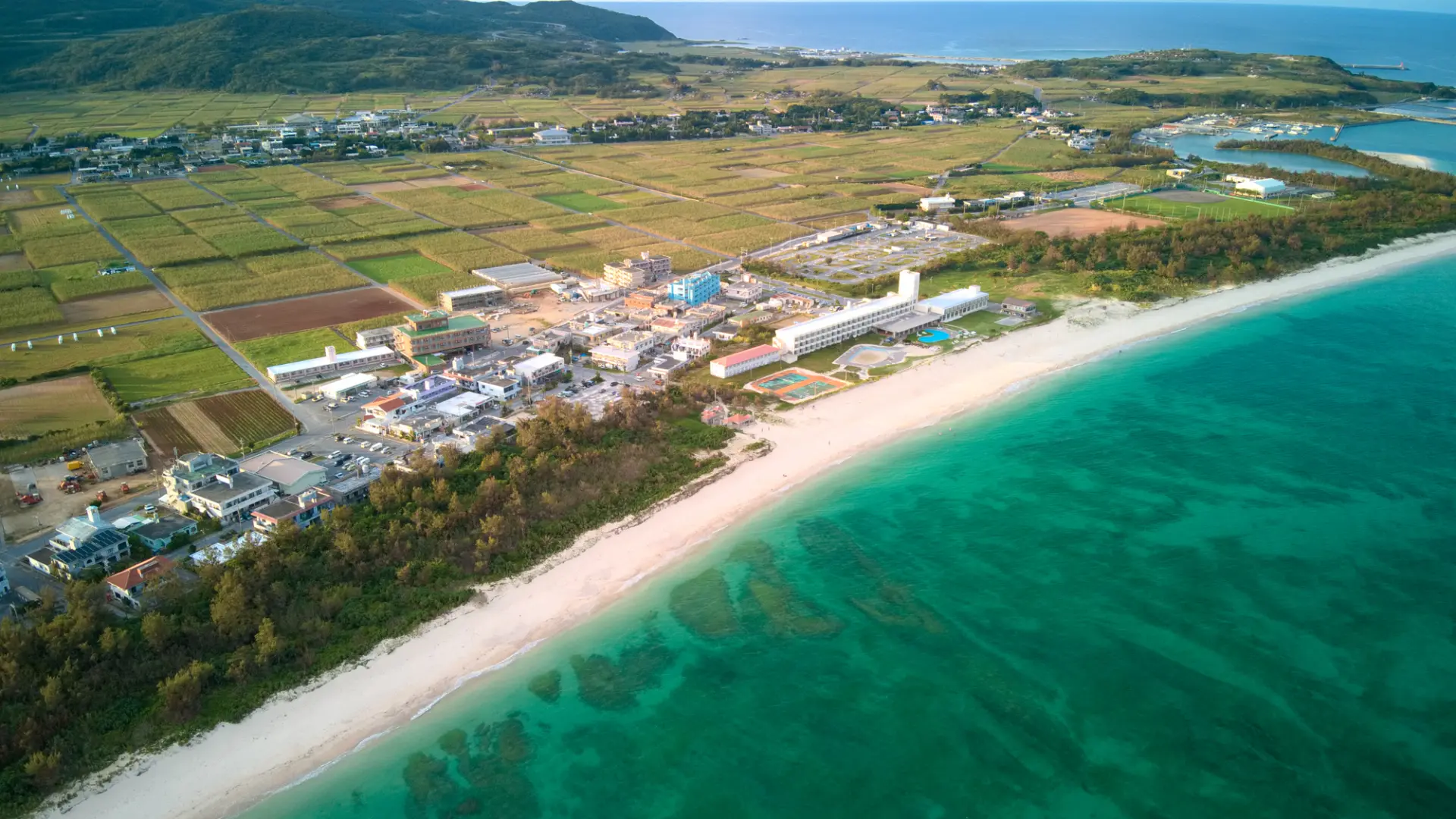
Another pleasure is Kumejima’s delicious natural water, a gift of nature.
Deep-ocean water is drawn about 2.3 km offshore at a depth of roughly 612 m, and “Kumejima no Shizensui,” a 100% natural spring water, is used for local specialties including umibudo (sea grapes), kuruma prawn aquaculture, and awamori.
-
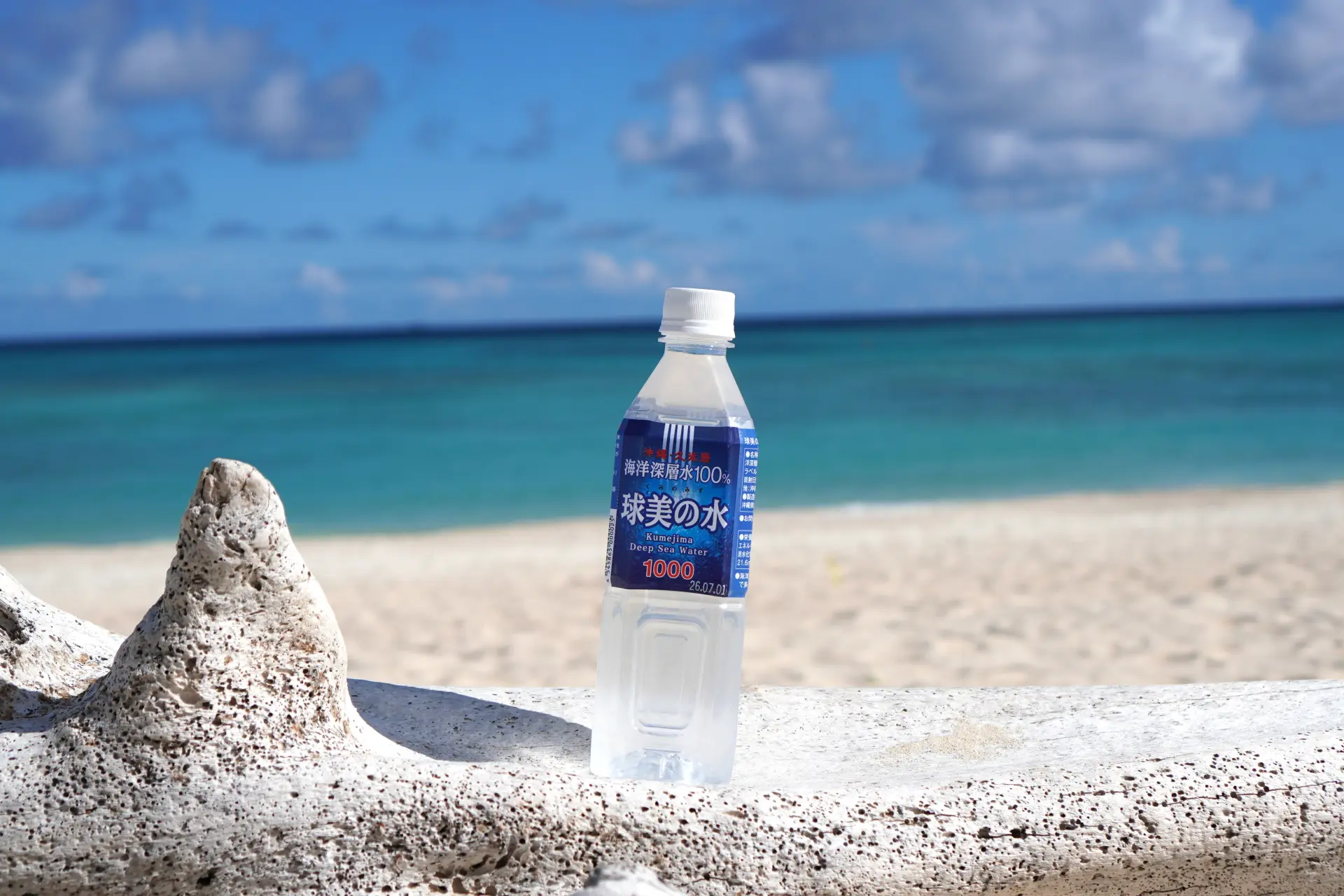
Also check out “Kumi no Mizu,” a mineral water made from deep-ocean water.
-
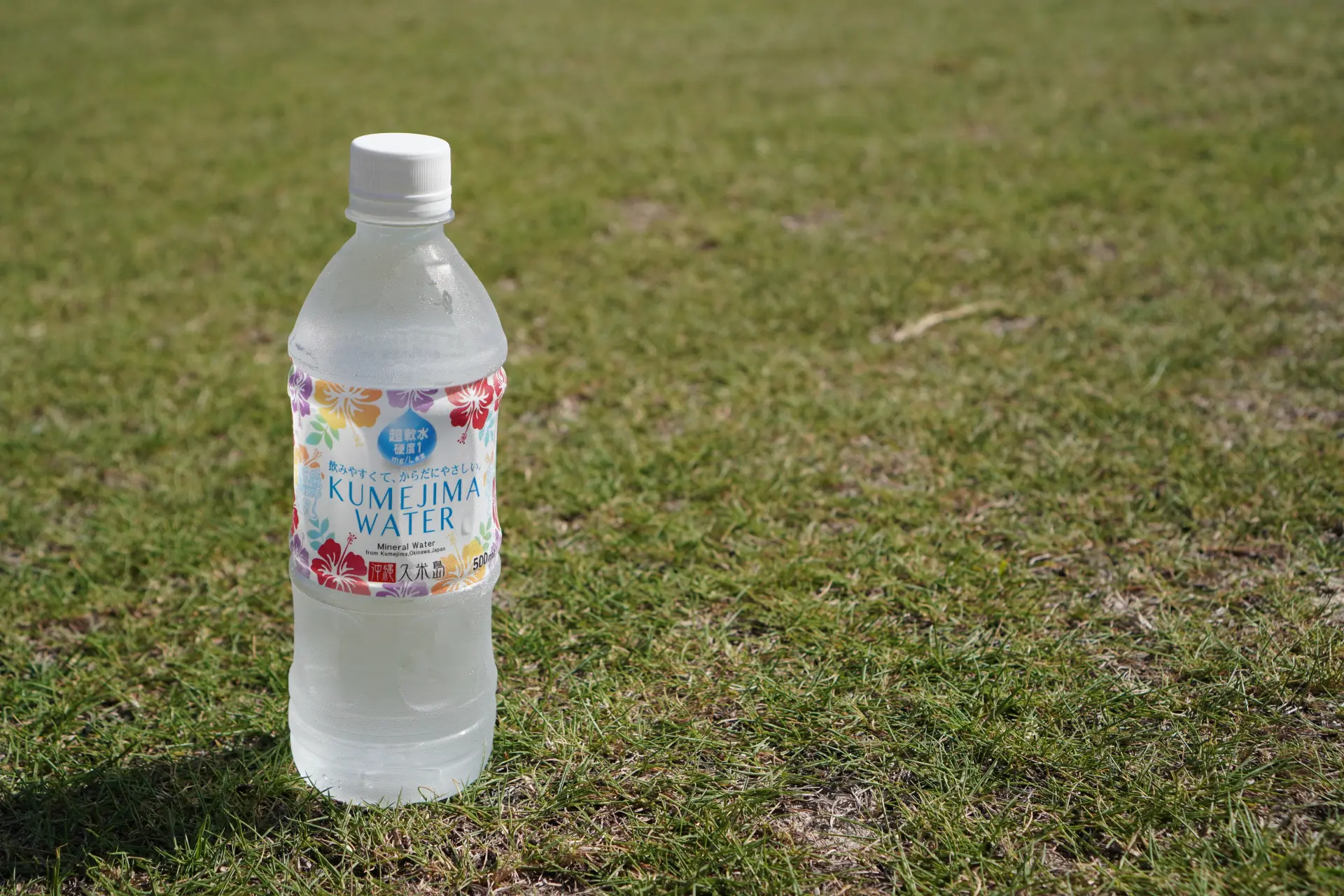
Try Kumejima’s smooth, mellow natural spring water.
Access to Kumejima
There are two ways to travel from the Okinawa Main Island to Kumejima: by plane or by ferry.
Choose based on your needs-planes if you prioritize travel time and convenience, or ferries if you value cost performance and bringing a rental car aboard for an additional fee.
Both have a higher risk of cancellations during typhoon season (July-September), with potential suspensions of service, so take care.
The details for each route are summarized below.
By Plane
- Route
- Fly JAL from Naha Airport to Kumejima Airport
- Time
- About 35 minutes
- Notes
- About seven flights per day operate from around 7:00 am to 6:00 pm.
* A seasonal nonstop JAL flight from Haneda Airport to Kumejima operates from mid-July to August.
By Ferry
- Route
- Board a Kume Shosen ferry from Naha Tomari Port and disembark at Kumejima Kanegusuku Port.
- Time
-
Nonstop: about 3 hours
via Tonakijima: 3 hours and 30 minutes. - Notes
-
Two daily departures at 9:00 am and 2:00 pm; no service on Monday afternoons.
* The morning ferry calls at Tonakijima, so it takes 3 hours and 30 minutes.
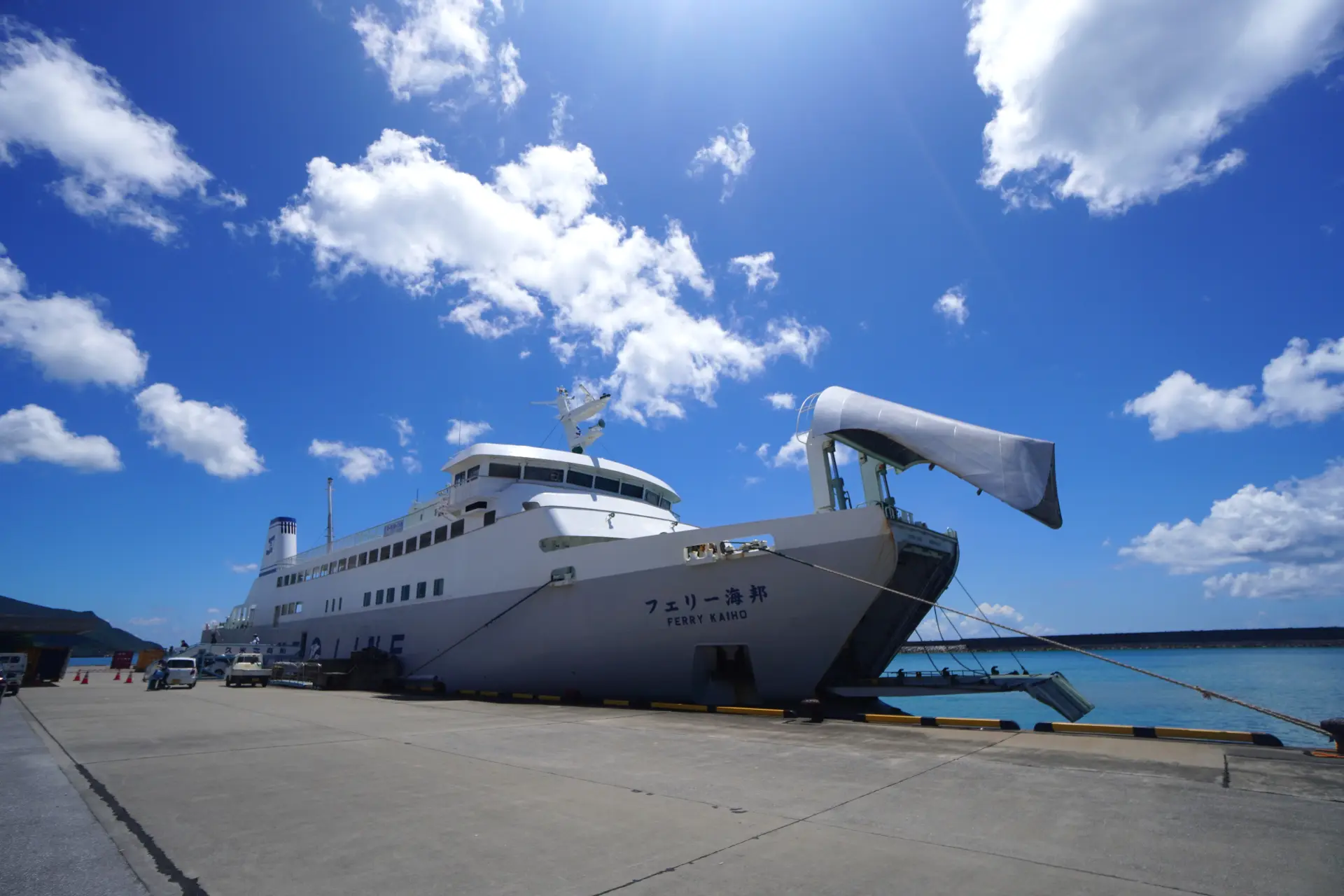
Main Transportation for Getting Around Kumejima
The primary way to get around Kumejima is by rental car, available at the airport and rental offices.
Key spots are spread out, so it is convenient for freely visiting the places you like.
Driving the coastal roads is exhilarating and turns travel itself into part of your trip.
However, the island has steep relief and many narrow and sloped roads, so drive with care.
It is difficult to depart directly by rental car from Kanegusuku Port, so confirm details with your rental company when reserving in advance.
All local bus routes arrive and depart from Kanegusuku Port, so also consider using local buses.
For short-distance sightseeing or island loops, rental bicycles are recommended for efficient travel while enjoying beautiful scenery.
Electric-assist bicycles (e-bikes) are available, making them popular even with travelers who are not confident in their stamina.
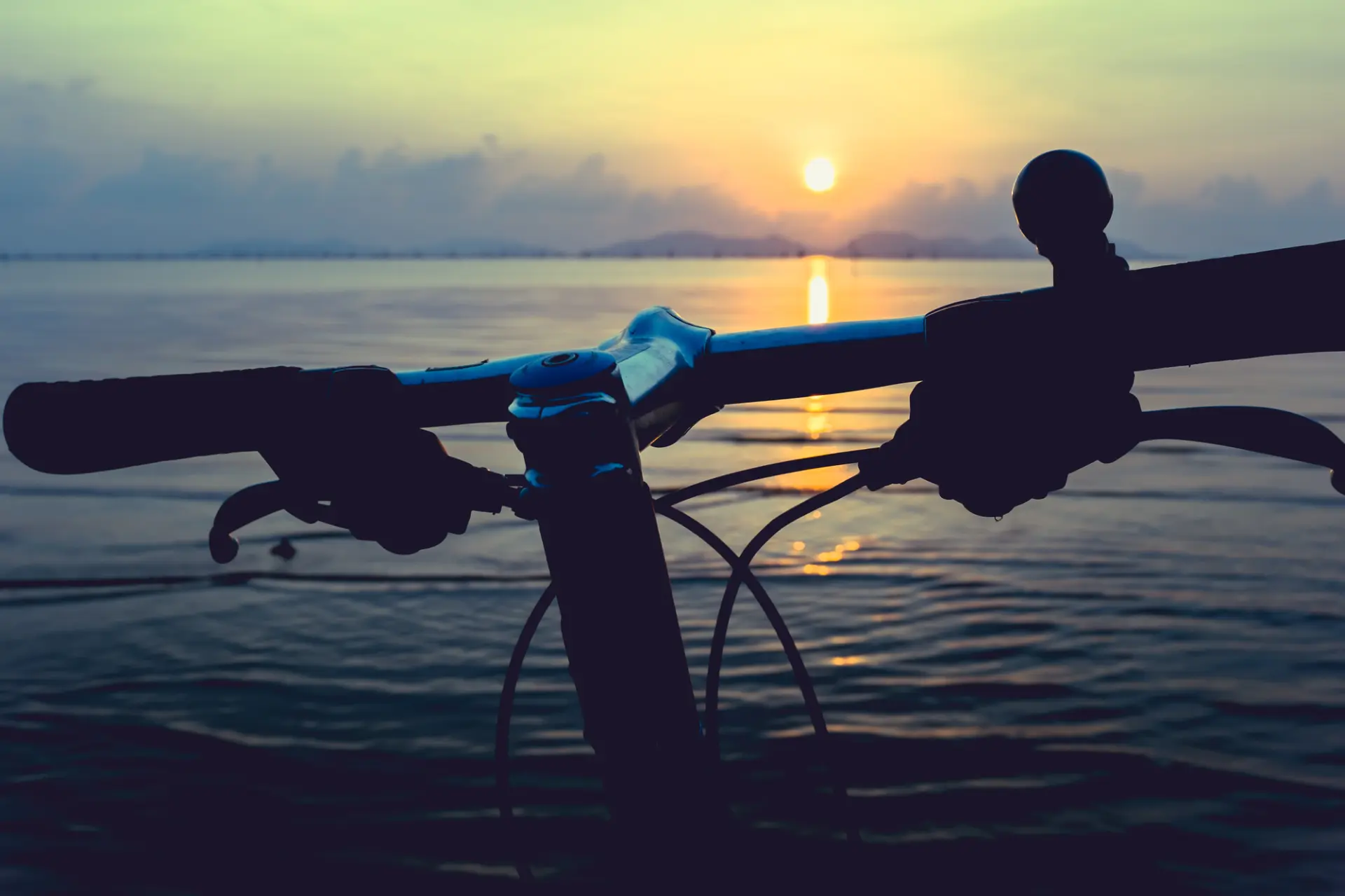
When Is the Best Season to Visit Kumejima?
The best time to visit is early summer, when the winter chill eases and temperatures are mild and comfortable.
As early summer approaches, island plants and marine life become active; from April to May, seasonal flavors like mozuku, aosa, and pineapple begin to appear and reach their peak.
After sunset, it also becomes the season to observe fireflies, starting with the Kumejima firefly, found only on Kumejima.
Because the season is short and viewing spots are limited, joining the night tour run by the Kumejima Firefly Museum is recommended.
This is a good time before the peak crowds, so you can relax and savor Kumejima’s beautiful natural scenery.
If you want to fully enjoy marine activities such as swimming, snorkeling, and SUP, summer is best.
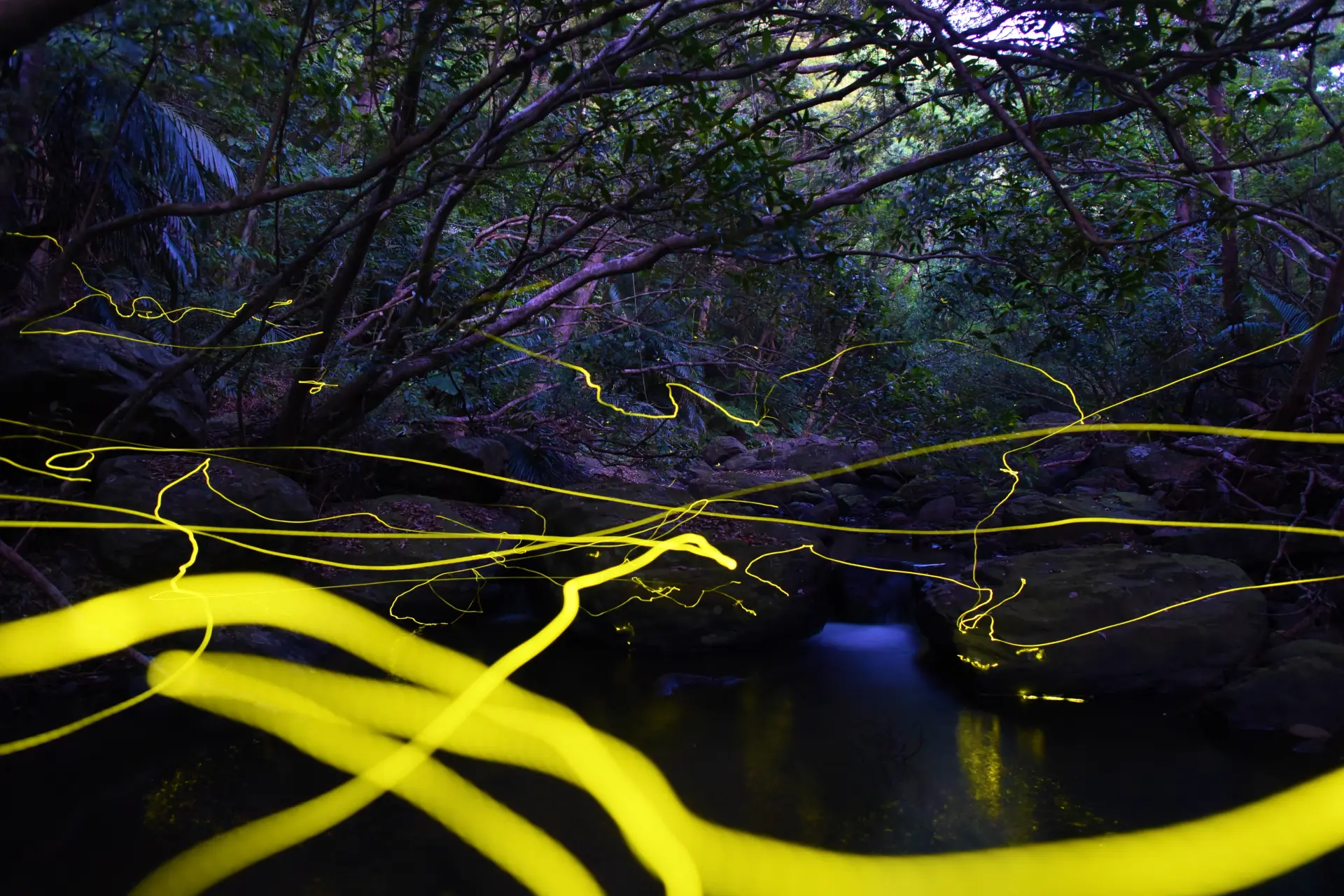
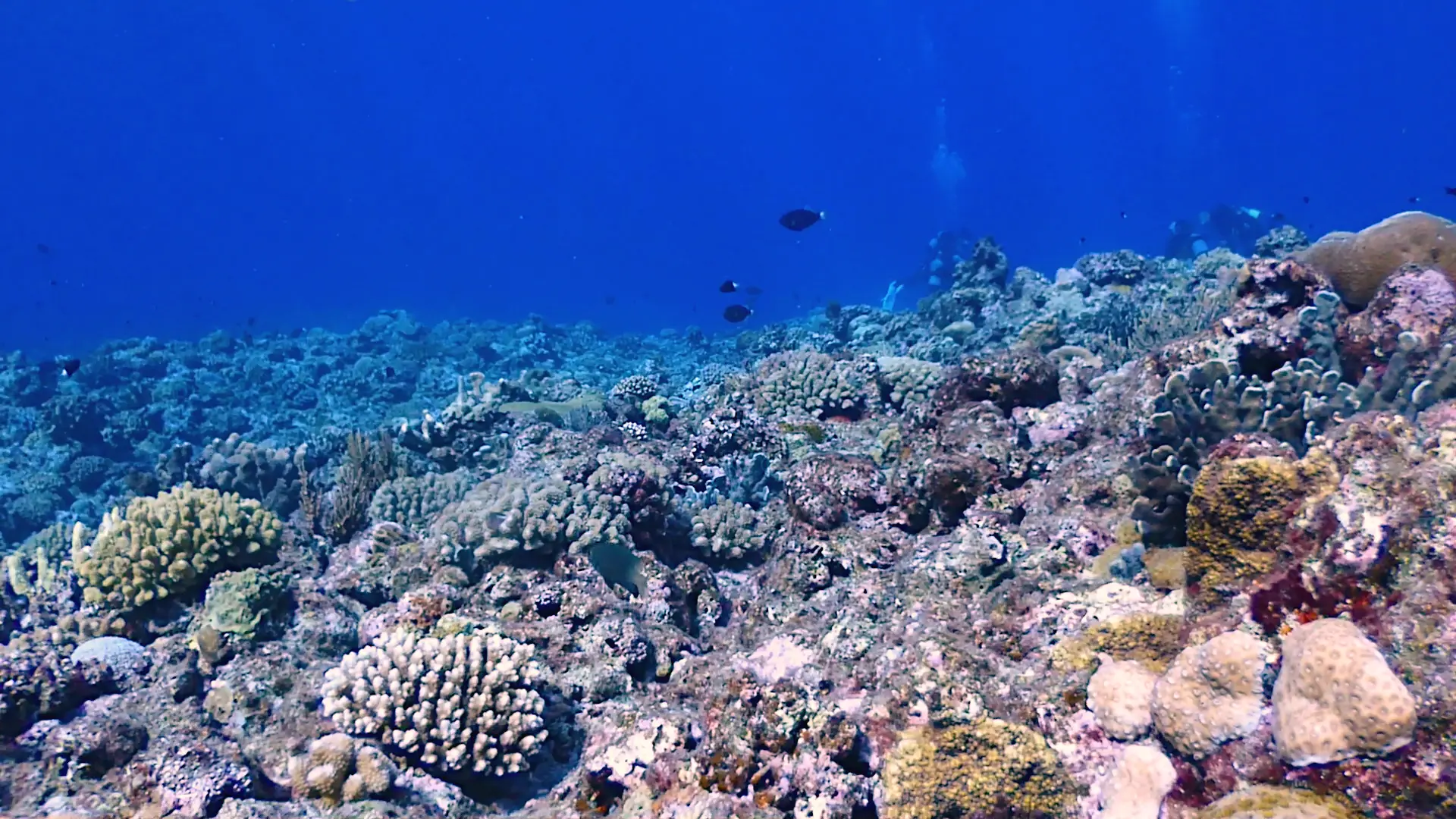
10 Popular Spots to Savor Kumejima’s Unique Charms
Here are the must-see spots for sightseeing in Kumejima.
You can fully enjoy Kumejima’s unique natural beauty or culture, gaining both relaxation and a sense of freedom.
Visiting these places not only lets you have fun but also deepens your understanding of environmental conservation and Okinawan history, making for a trip that is rich in both sightseeing and learning.
Use the information as a guide and visit multiple attractions.
1. Hatenano-hama
Hatenano-hama is an uninhabited island composed only of sand, located about 5 km off Kumejima.
There are three beaches named, from closest to Kumejima, “Mae-no-Hama (Menuhama),” “Naka-no-Hama (Nakanuhama),” and “Oku-no-Hama (Okunuhama),” collectively called “Hatenano-hama,” with a total length of about 7 km.
The waters around the sandbar are exceptionally clear, earning it praise as “the most beautiful in the East.”
You reach Hatenano-hama by boat with an authorized operator from Kumejima, and most companies require reservations, so book in advance.
Because frequent hydration is essential, bring ample water.
-
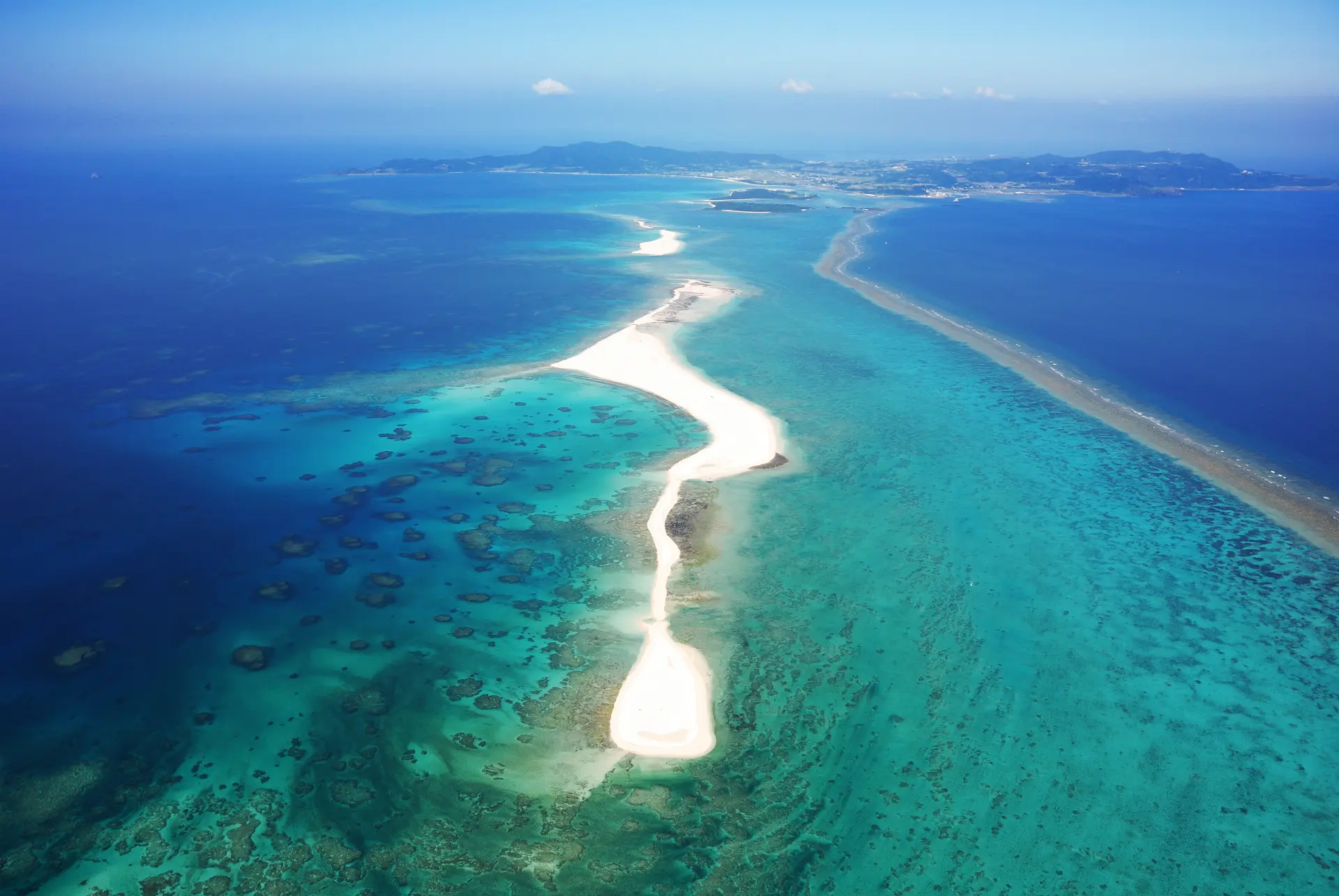
A beautiful landscape of nothing but sand
-
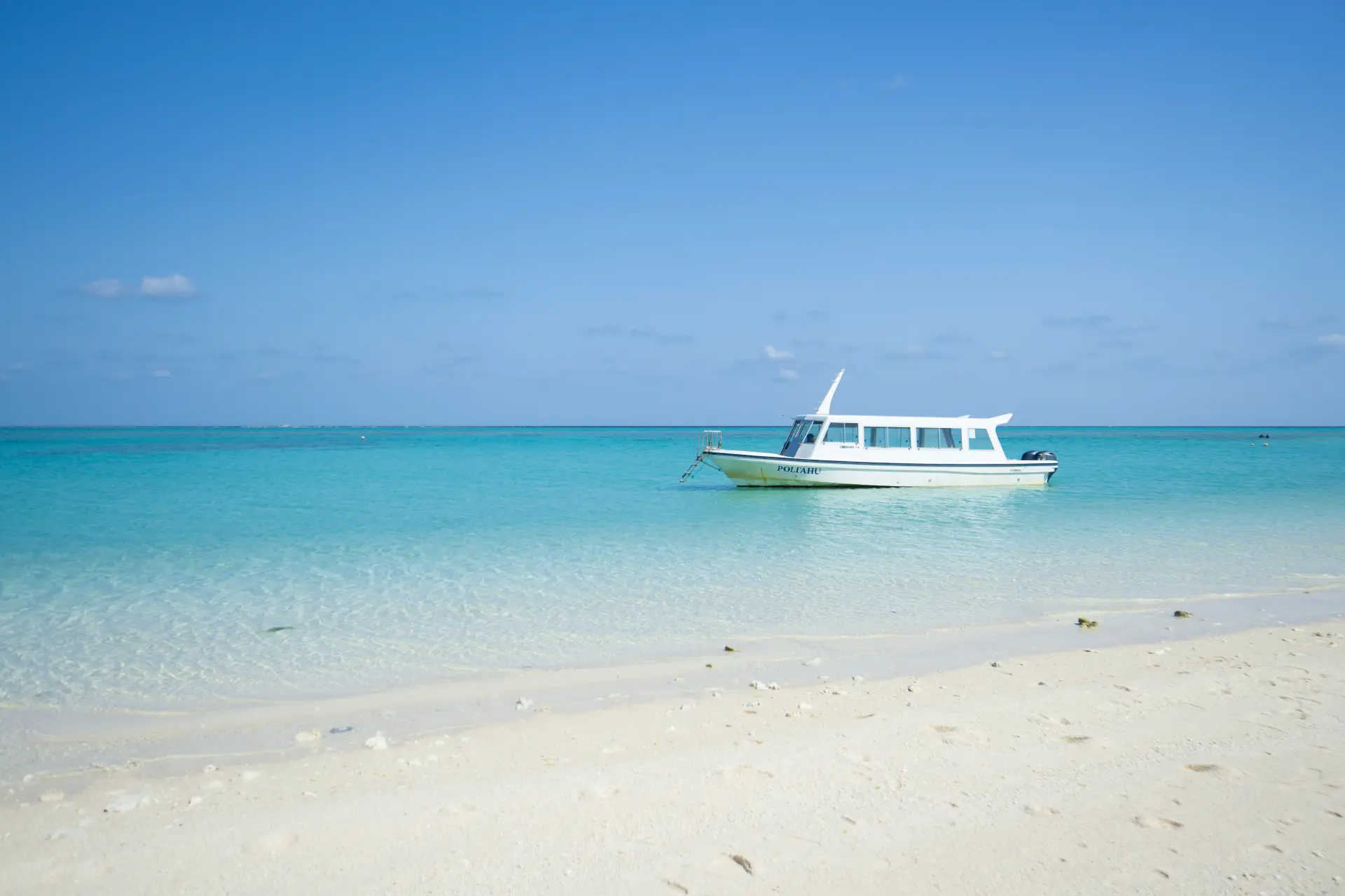
A spectacular view featured in a Google commercial
2. Tatami-ishi on Ojima Island, Kumejima Town
Tatami-ishi spreads along the south coast of Nishi-Ojima Island on Kumejima’s east side and is a nationally designated natural monument formed by volcanic activity about six million years ago.
The terrain derives from columnar joints that formed when andesitic lava cooled rapidly and cracked, and at low tide, pentagonal and hexagonal rocks emerge across roughly 50 m north-south and about 250 m in length.
Nature’s geometric pattern resembles a turtle shell and is also known as “Turtle Shell Rock.”
Its scale and mysterious beauty are rare even in and outside Japan, captivating many travelers with a magnificent view.
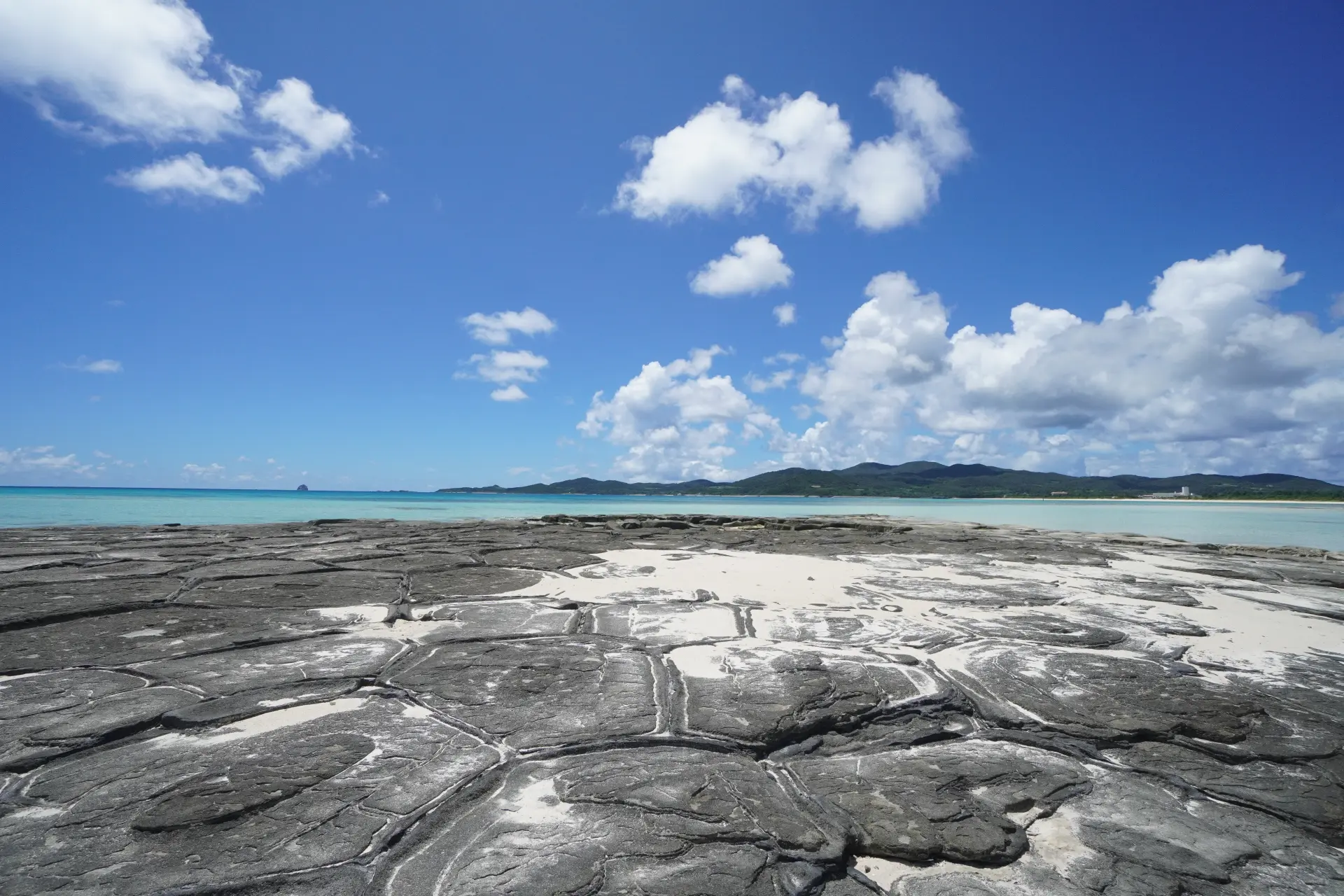
3. Eef Beach
Eef Beach stretches about 2 km with fine, pure-white sand on a natural shoreline.
At low tide, it is shallow enough to walk far offshore, and its clear emerald-green sea-selected among the “100 Best Shores in Japan”-is a major draw.
The nearby Eef district offers a full range of accommodations, dive shops, supermarkets, and restaurants, so it is easy to head to the beach.
It is also popular for snorkeling and diving, with diverse coral and fish observable up close.
While it is primarily a sunrise beach, the sea glowing at sunset and the star-filled night sky are beautiful, and on some nights the full moon illuminates the sea.
Savor the luxury of relaxing on the beach while listening to the sound of the waves.
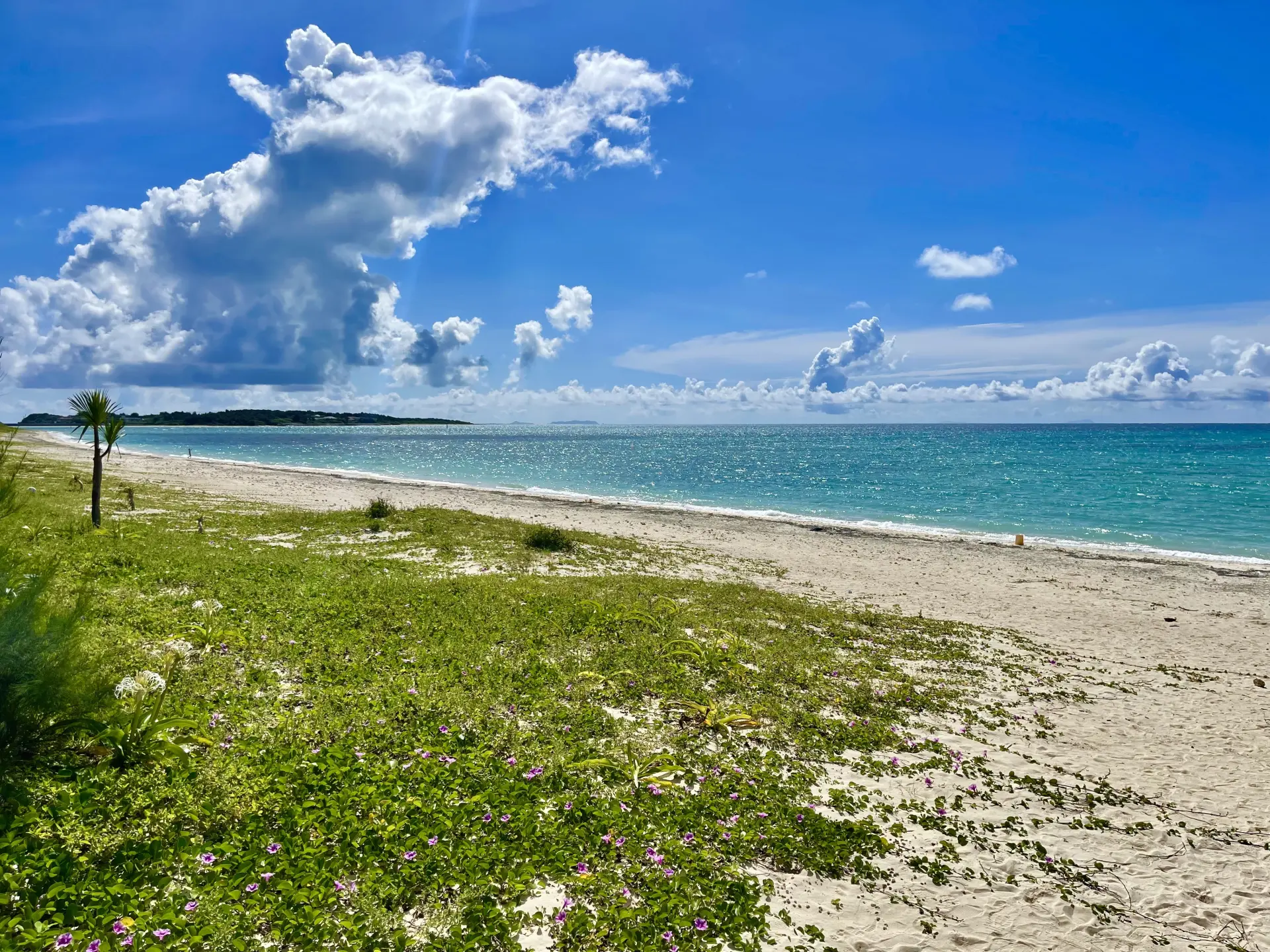
4. Uegusuku Castle Ruins
The Uegusuku Castle Ruins lie on Kumejima, a remote island about 100 km west of the Okinawa Main Island.
At around 310 m above sea level, they are the highest-elevation castle ruins in Okinawa.
The view from here is truly spectacular, offering a 360-degree panorama of Kumejima and, on clear days, vistas of Hatenano-hama and neighboring islands.
Although the ruins sit on a small mountain, you can drive up close to the summit.
-
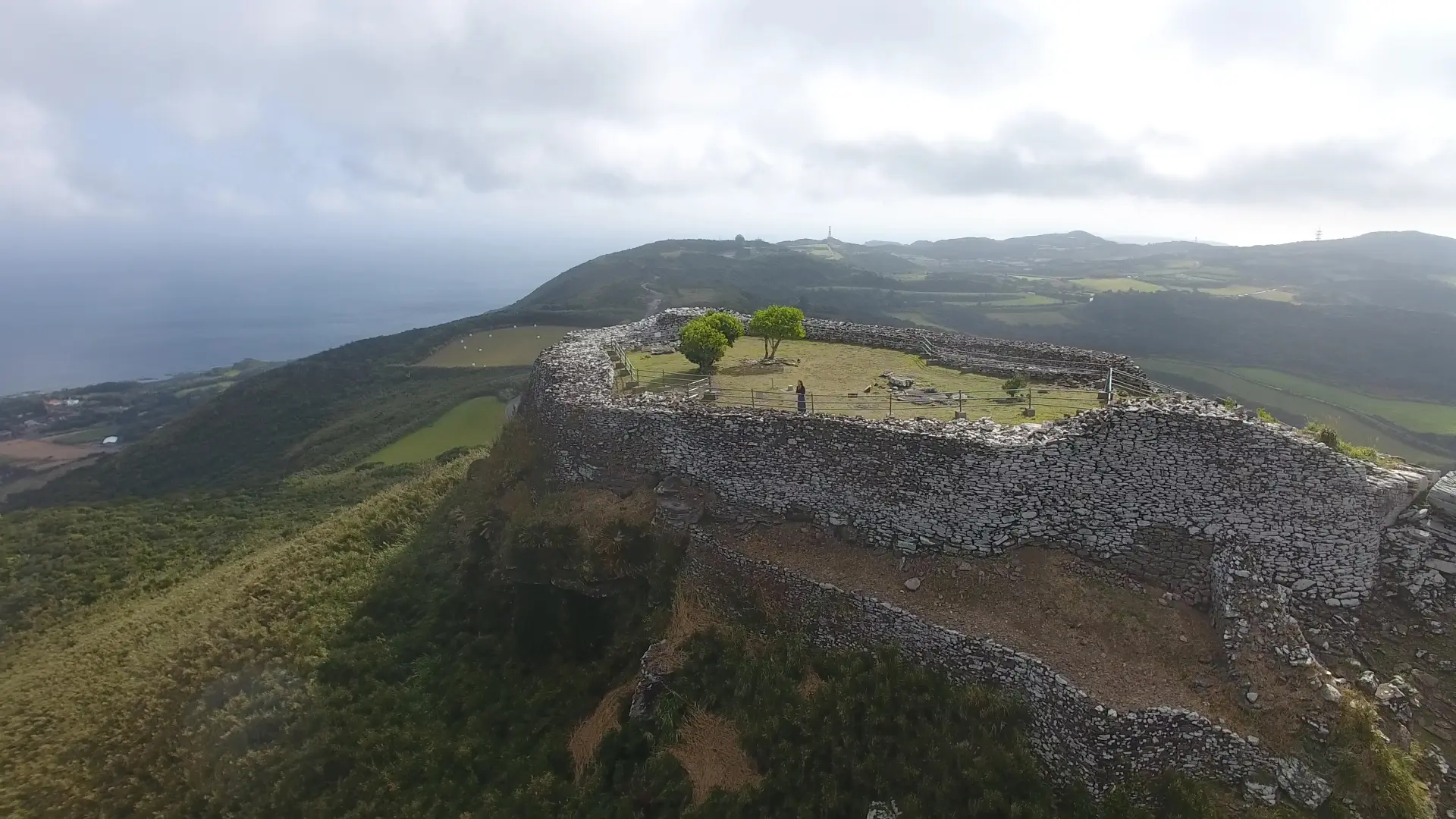
Tall, stacked stone walls still remain today.
-
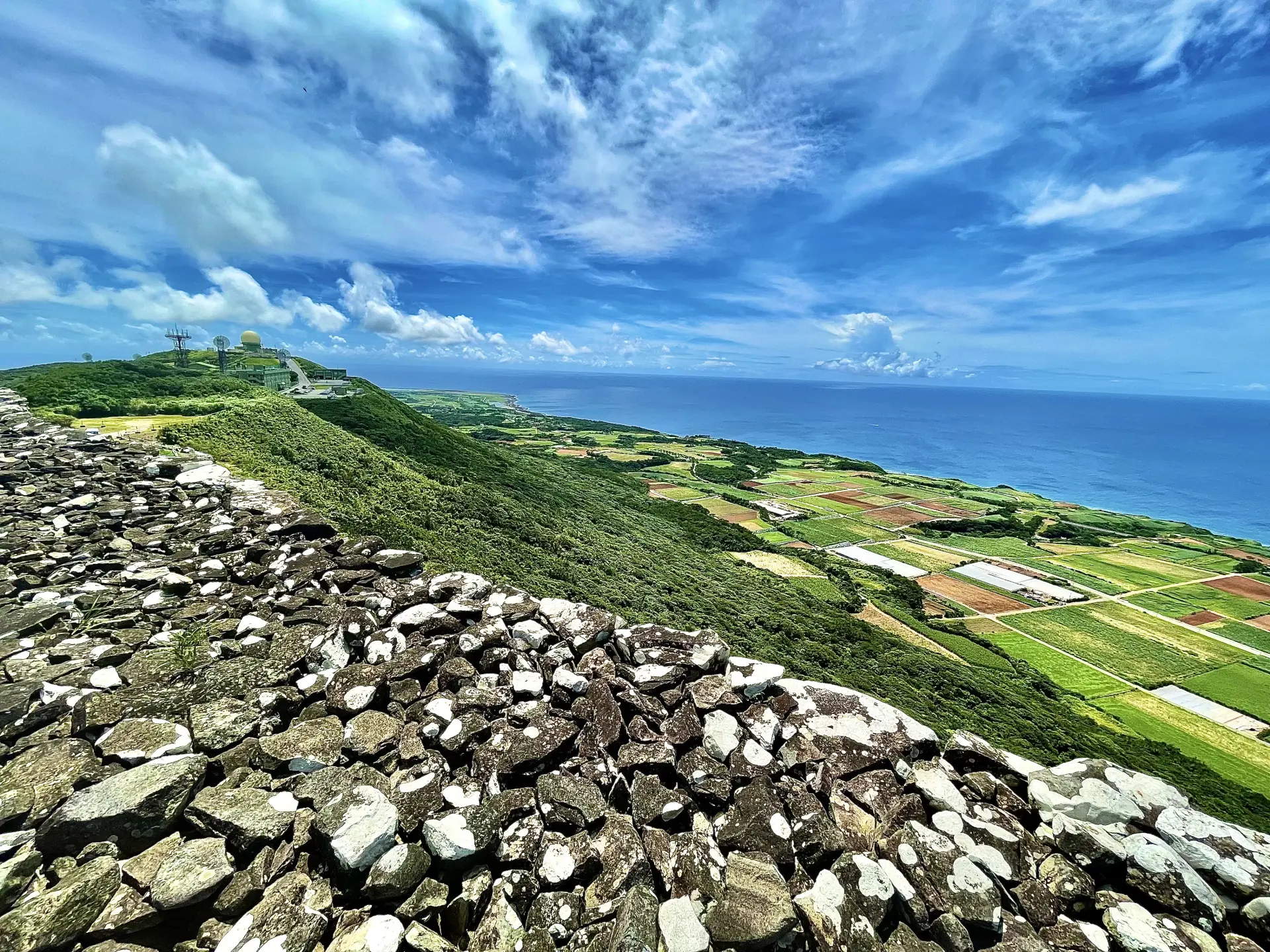
A Kumejima scenic highlight: castle ruins located at the highest elevation in Okinawa.
5. Gushikawa Castle Ruins
The nationally designated historic site Gushikawa Castle Ruins are thought to be a gusuku (castle) built in the 14th-15th centuries during the Ryukyu Kingdom.
Its hallmark is a strategic location that leverages a natural fortress surrounded on three sides by cliffs, and the silhouette rising along the coast exudes historic romance.
The greatest appeal is the dynamic landscape woven by its ancient architecture.
The cliffs overlooking the East China Sea and the rock formations visible beyond the castle ruins are grand, with the terrain itself speaking to the defensive capabilities of the time.
Also stop by the nearby power spot for fertility prayers, “Miifuga” (Onna-iwa).
Around the summer solstice, you may be able to see the sunrise through Miifuga.
-
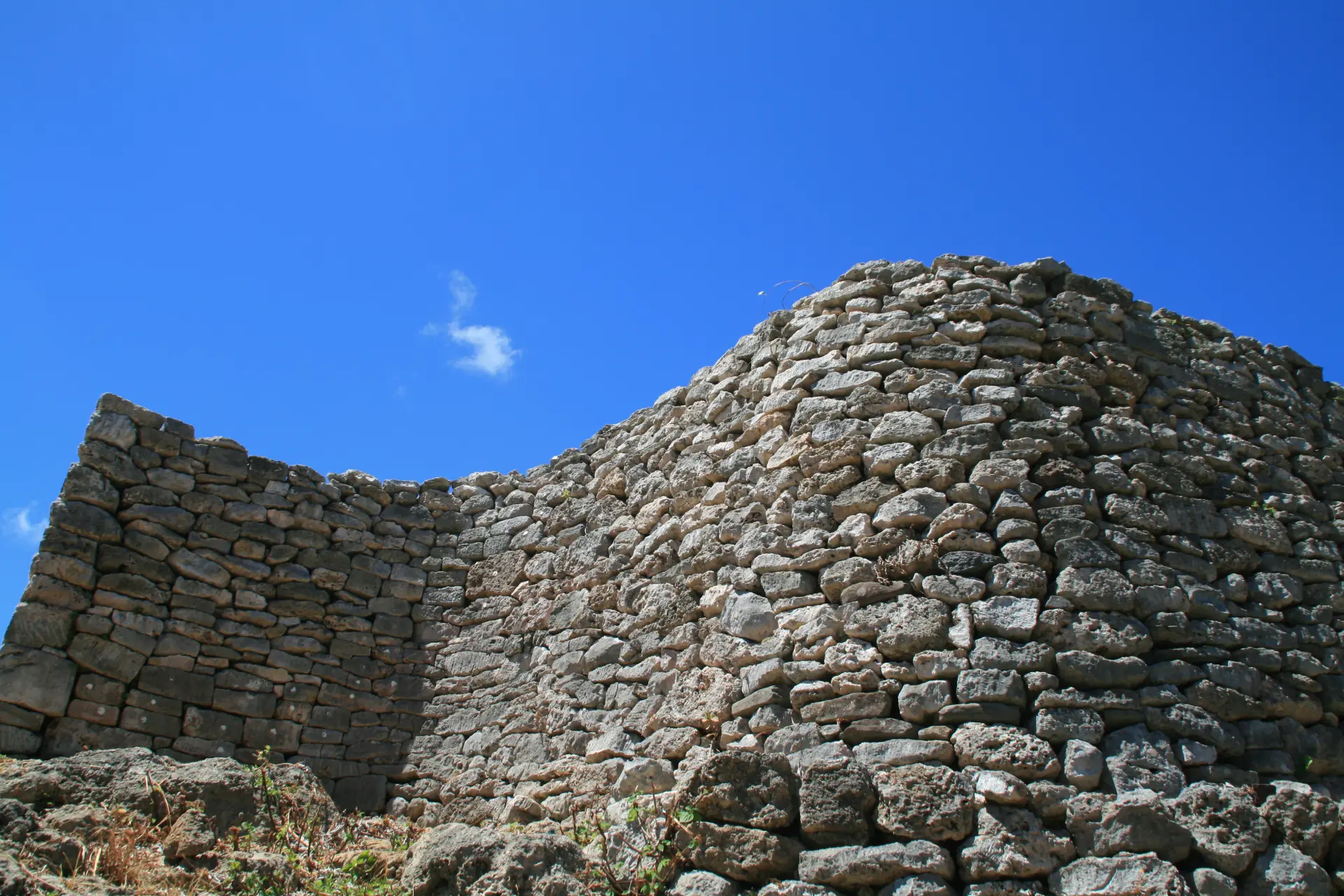
Ruins from the 14th–15th centuries of the Ryukyu Kingdom period
-
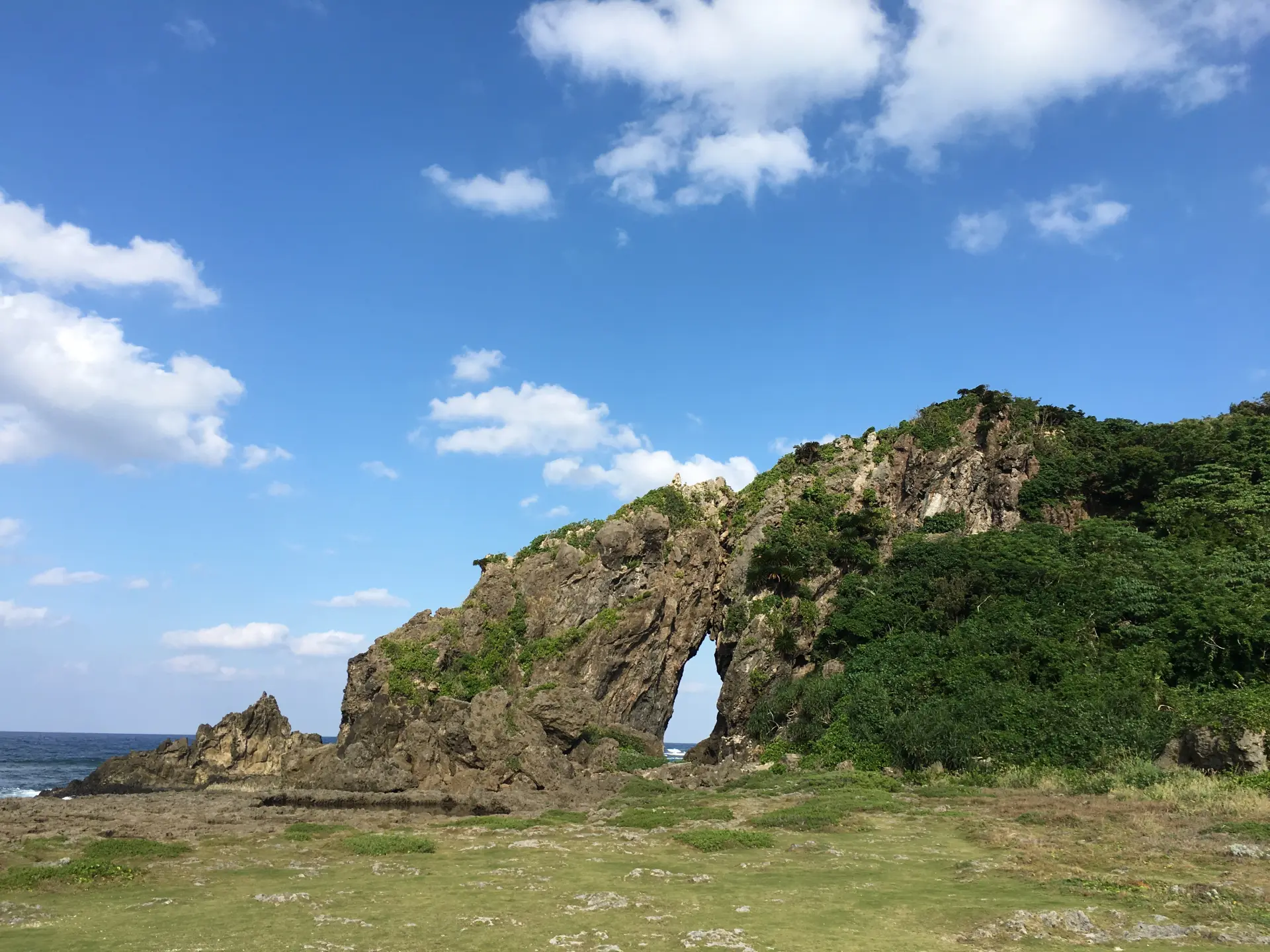
"Miifuga," a unique rock formation carved by wind and surf
6. Hiyajyo Banta
Hiyajyo Banta is a cliff-top viewpoint along the northeastern coast of Kumejima and is one of the island’s premier scenic spots at about 200 m in elevation.
“Banta” means “cliff” in the Okinawan dialect.
From the observation deck along the island’s loop road, you can take in distant views of Hatenano-hama, the Kerama Islands, and Aguni Island.
On clear days, the sea deepens into multiple shades of blue, and you can enjoy the contrast of green-clad cliffs and white sand while feeling the sea breeze and gazing at the horizon.
A parking area and a shop are nearby, making it an ideal rest stop during drives or island touring.
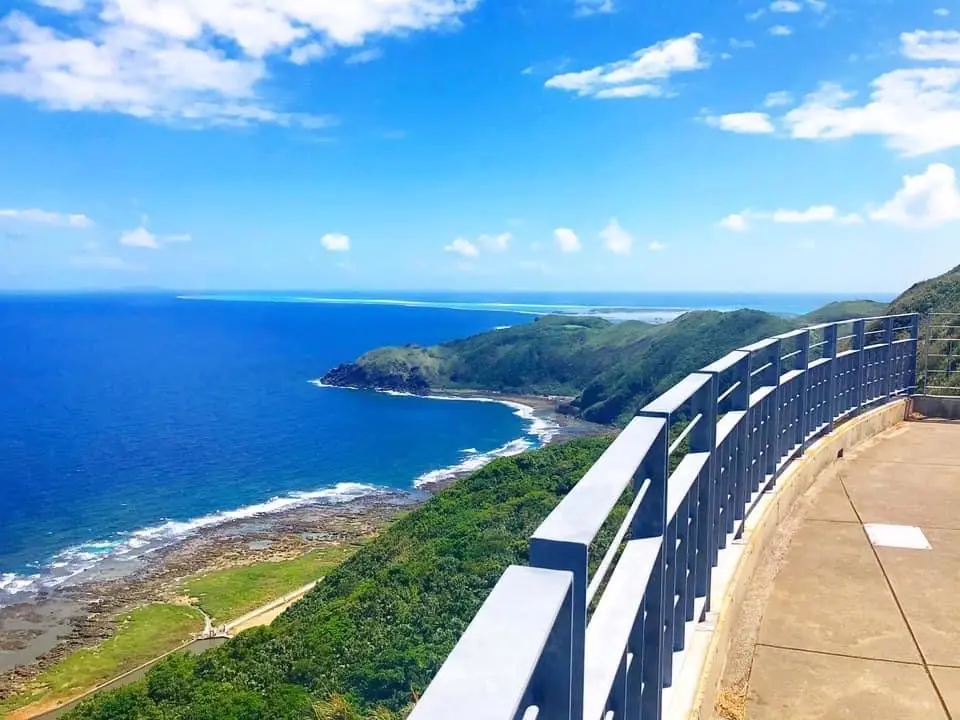
7. Kumejima Sea Turtle Museum
The Kumejima Sea Turtle Museum is a visitor facility where you can learn about the island’s sea and sea turtle conservation.
Inside, you can watch three species-loggerhead, green, and hawksbill-swim leisurely in large tanks.
Explanations by specialist staff, along with models and panel displays, help deepen understanding from turtle ecology to environmental issues from an educational perspective.
If the timing works, join the hands-on program held during Golden Week and summer holidays.
Though fully reserved for about 10 people per day, it offers a rare chance to feed and directly interact with sea turtles.
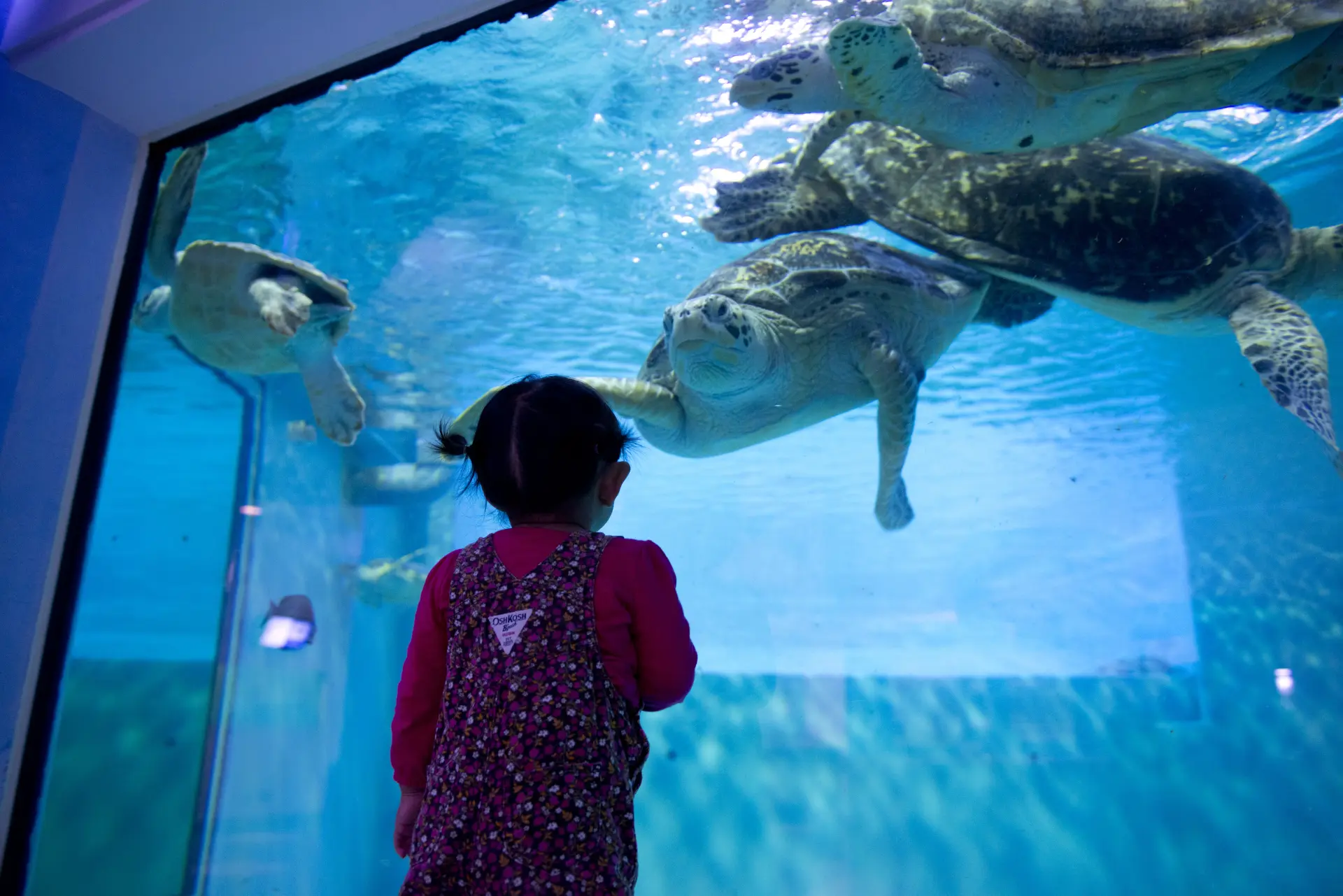
8. Shinri Beach
Shinri Beach lies on Kumejima’s west coast and features about 3 km of natural sandy shore.
A surrounding reef calms the waves into a lagoon, and at low tide it becomes so shallow it can feel as if you could approach the barrier reef, allowing families and marine-activity beginners to enjoy safely.
It is also renowned as a sunset spot, with the sun sinking into the horizon in stunning beauty.
Its location about three minutes by car from Kumejima Airport offers excellent access and the added appeal of watching planes take off and land.
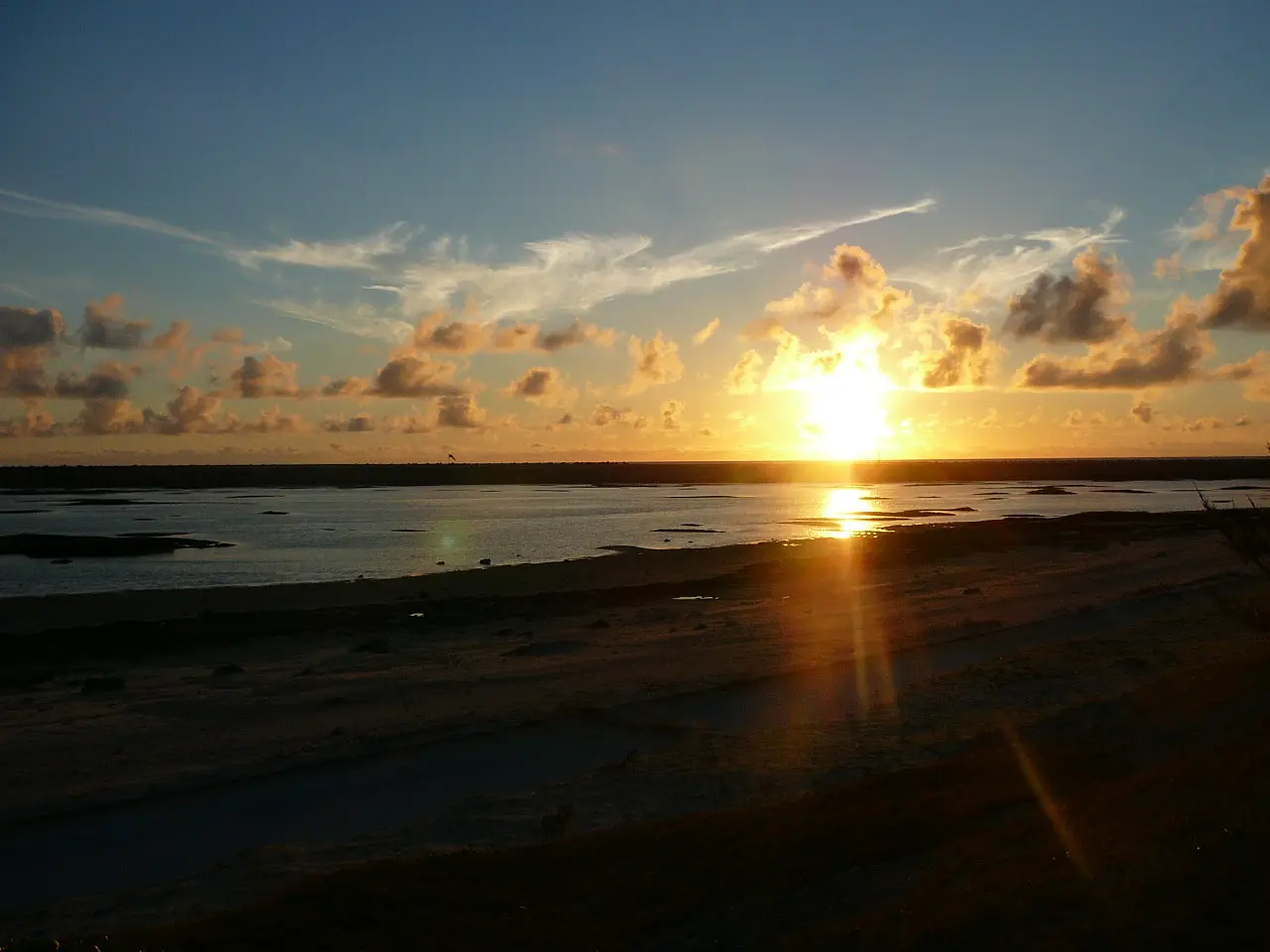
9. Kumejima Tsumugi no Sato Yuimaru Kan
Kumejima Tsumugi no Sato Yuimaru Kan houses a museum and hands-on studio that preserve and present Kumejima tsumugi, the island’s traditional textile.
Kumejima tsumugi, known as the source of Japan’s tsumugi culture, began in the 15th century and is designated as an Important Intangible Cultural Property of Japan.
A single craftsperson performs all processes by hand, from spinning silk threads to plant-dyeing with vegetation grown on the island and weaving, resulting in a rustic yet supple texture and uniquely deep tones.
In addition to exhibits on the history and production process, you can observe artisans at work.
There is also a sales corner and workshops where you can make your own items, with bolts of cloth as well as kariyushi shirts and accessories available-excellent for souvenirs or a personal treat.
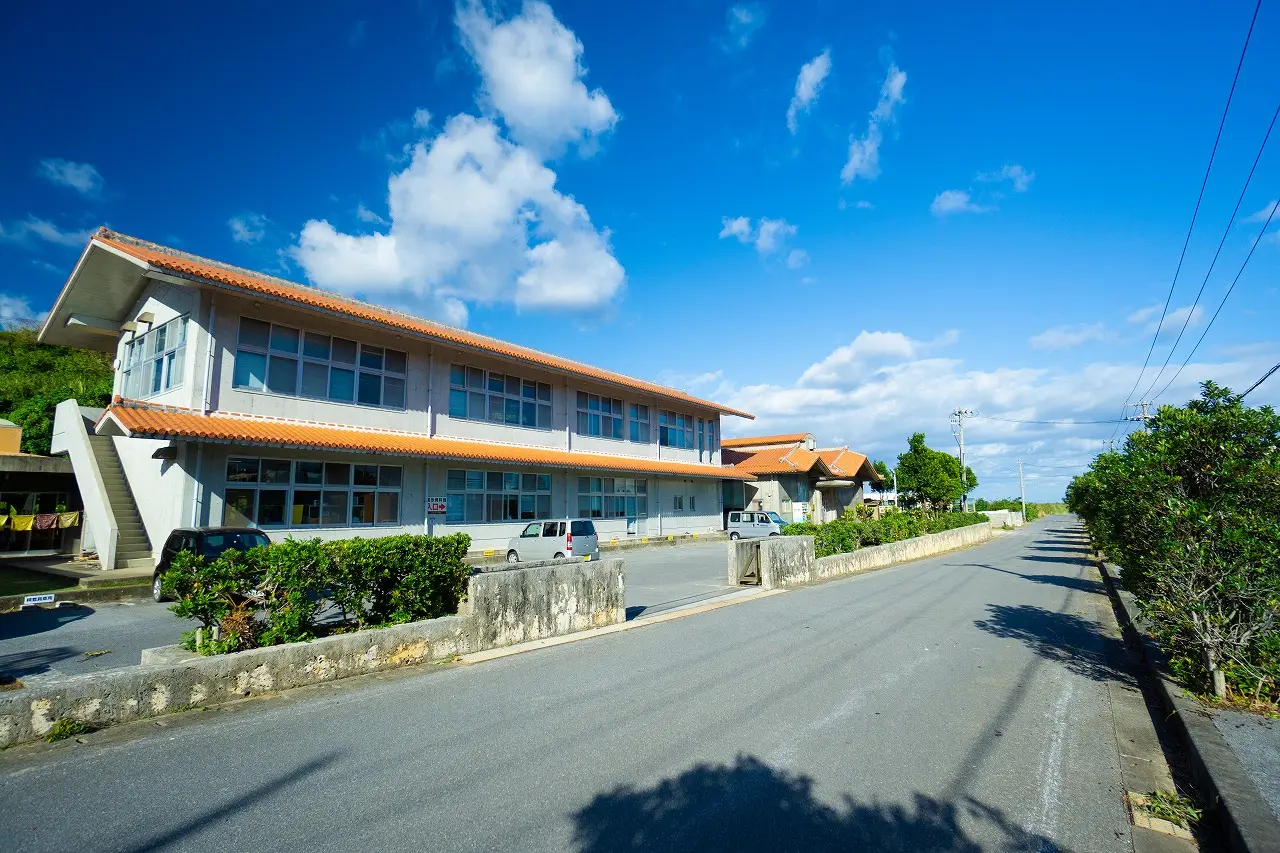
10. Kumejima Museum
Kumejima Museum broadly introduces the island’s nature, archaeology, folklore, and culture.
Its permanent exhibits are organized around four themes-“Nature of Kumejima,” “Transitions Through the Ages,” “Island Relics,” and “Island Life”-displaying flora and fauna using real specimens and models, alongside excavated objects, everyday tools, and ceramics in an accessible way so you can learn about the history and people’s lives from the Ryukyu Kingdom era onward in a short time.
You can also watch videos of traditional festivals, so visiting first as an introduction helps you enjoy each spot more deeply.
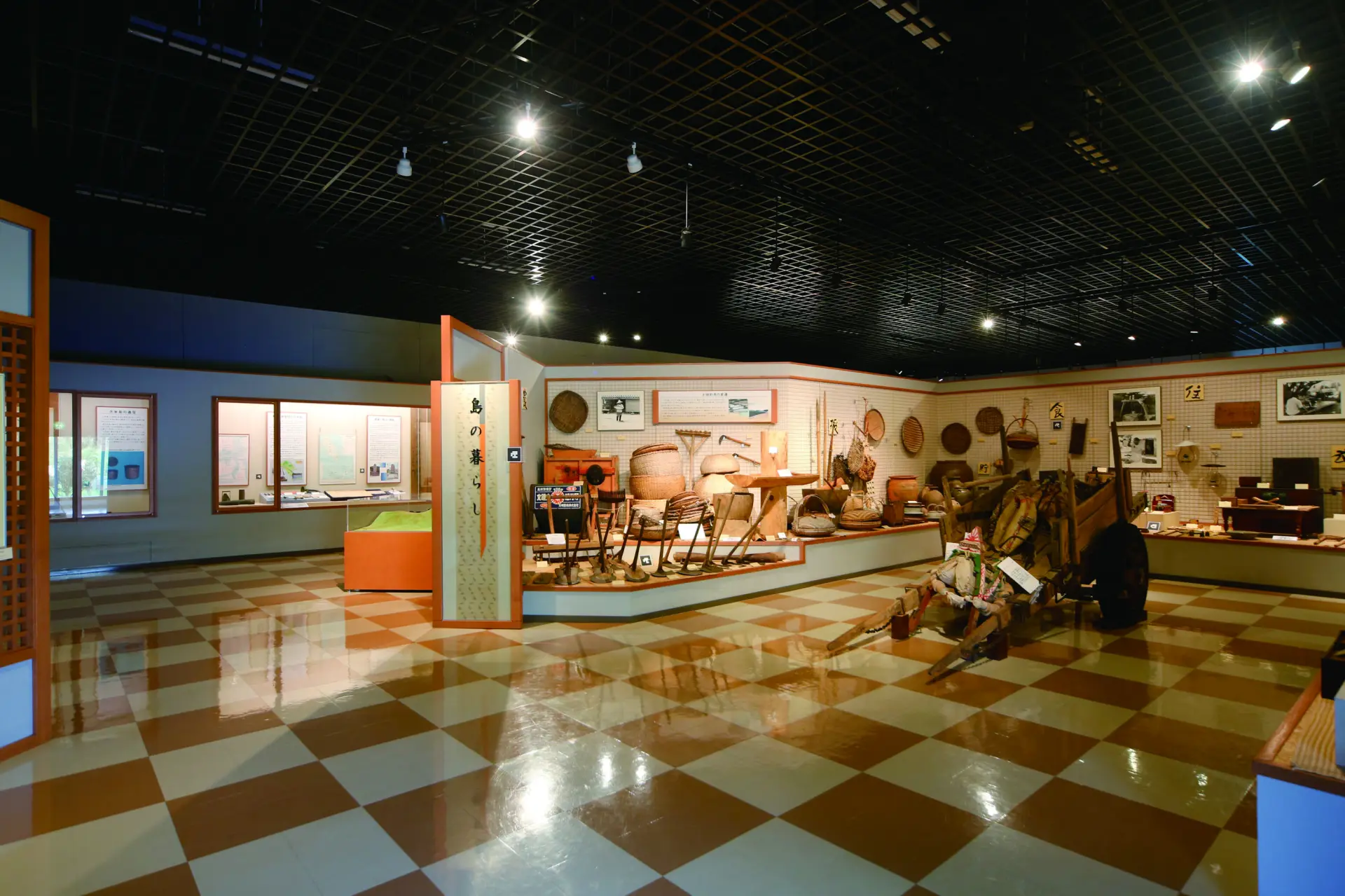
Experience the Culture Through Food: 7 Signature Kumejima Specialties
Here are the local specialties you should eat when you visit Kumejima.
Each is deeply tied to the island’s history, lifestyle, and natural environment, letting you experience culture through cuisine.
The lineup is rich-meat, seafood, and spirits-so you can enjoy diverse and distinctive flavors.
If you are sightseeing on Kumejima, be sure to savor authentic tastes you will not find elsewhere.
1. Kumejima Soba
While Okinawa soba takes many forms across the prefecture, Kumejima soba often uses noodles produced on the island, and the soup base varies by shop.
The noodles for Kumejima soba tend to be slightly yellow, flat, and lightly wavy, with a chewy, soft texture as a common trait.
The soup is typically based on pork, chicken, and bonito dashi, but “shima miso soba” made with Kumejima miso is also a famous specialty.
Many shops add their own twists-such as moyashi (bean sprouts), chikiagi (deep-fried fish cake), soki or sanmainiku, and aosa or mozuku-so you can enjoy Kumejima’s unique food culture in each bowl.
Some restaurants are known for “kuruma prawn soba” packed with Kumejima kuruma prawns, and the bowl-rich and savory yet wholesome and heart-warming-is popular with locals and visitors alike.
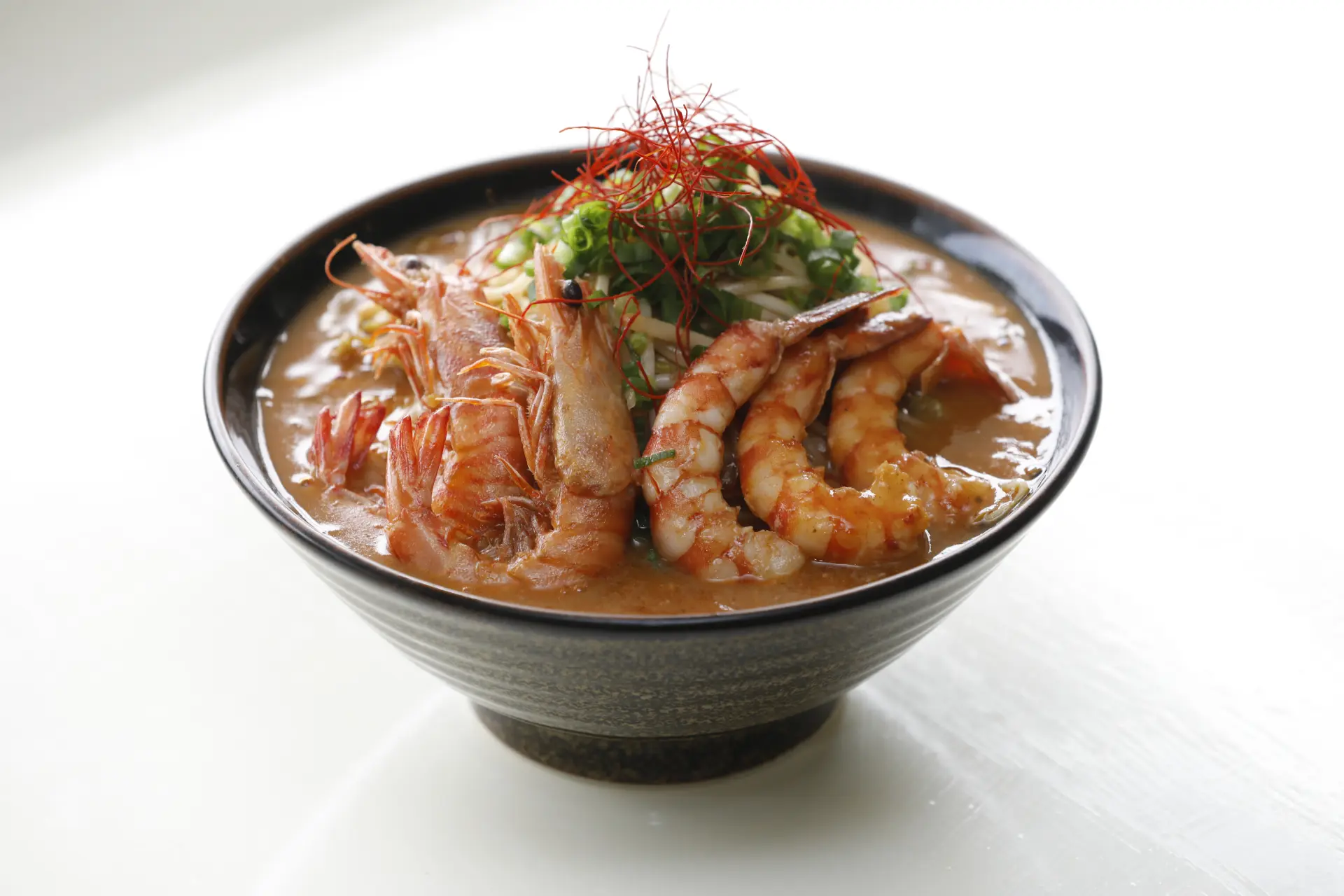
2. Kuruma Prawn
Kuruma prawn is a large shrimp long loved in the seas around Japan, named because the pattern when the abdomen curls resembles a wheel.
It suits a wide range of preparations-sashimi, salt-grilling, mixed-rice, and more-and is treated as a high-end ingredient particularly in Japanese cuisine.
Kumejima boasts the largest production of kuruma prawn in Japan, with sweeter flesh and a firmer bite than typical varieties.
“Kuruma prawn soba” is one of the best ways to taste Kumejima’s bounty directly.
The soup is built on an umami-rich shrimp stock extracted from shells and heads, emphasizing depth and aroma.
Noodles catch the soup well, and the springy prawn adds a vivid accent, making one bowl deeply satisfying.
If you visit during the shipping season from November to March, also enjoy kuruma prawn sashimi.
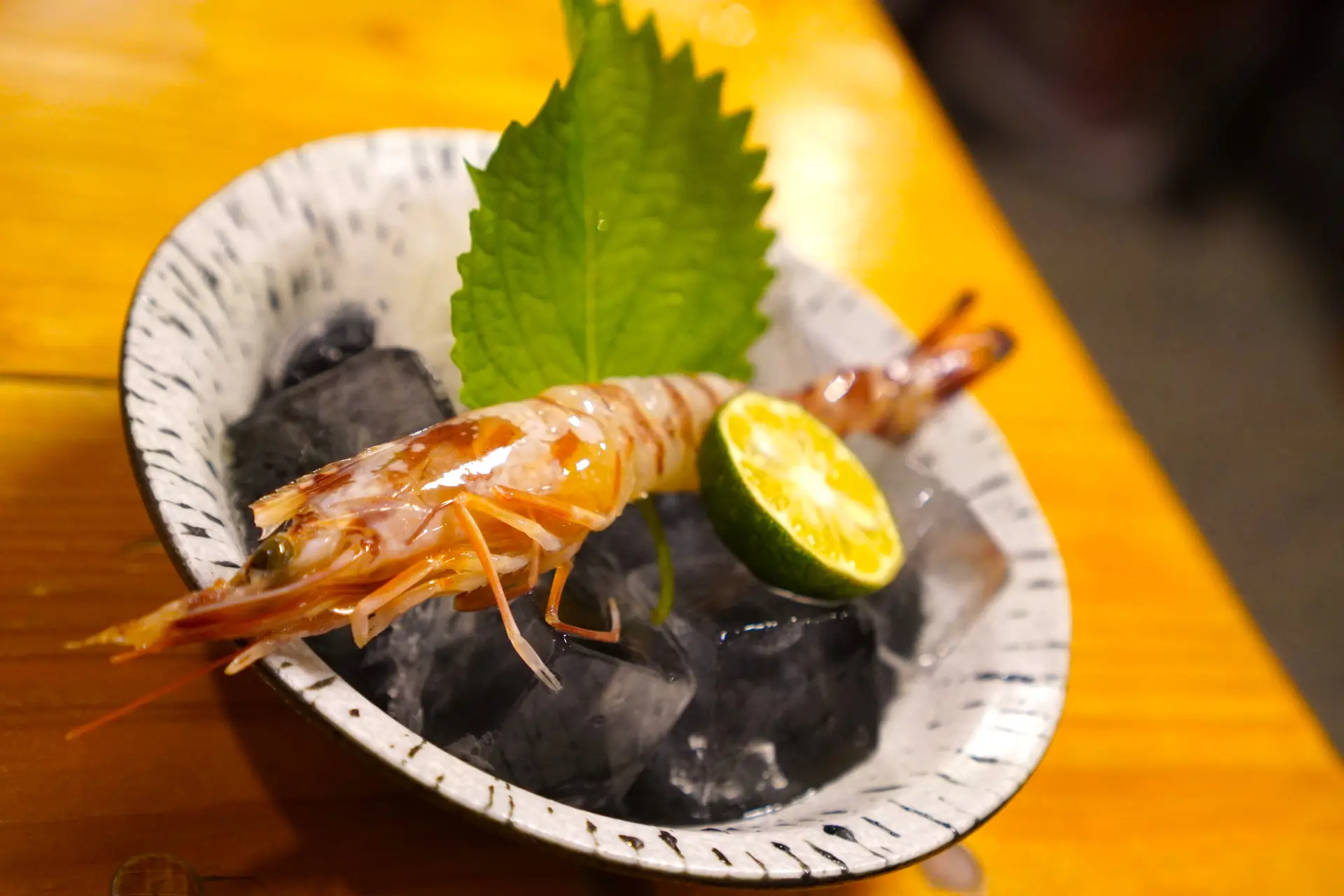
3. Umibudo (Sea Grapes)
Umibudo, formally called “Kubire-zuta,” is a type of seaweed.
Its grape-like strings of tiny beads give it the nickname “green caviar.”
Enjoy a unique popping texture, briny bursts, and a faint ocean aroma, and it is popular as a healthy ingredient.
It is typically eaten fresh, simply with ponzu or sanbai-zu, and also appears in salads and as a topping for chilled tofu and other dishes.
On Kumejima, menus featuring sea grapes in rolled omelets or wrapped in nori are popular, and local restaurants serve superb versions.
By leveraging deep-ocean water to cultivate umibudo and manage water temperature even in the hot summer, Kumejima achieves Japan’s highest production.
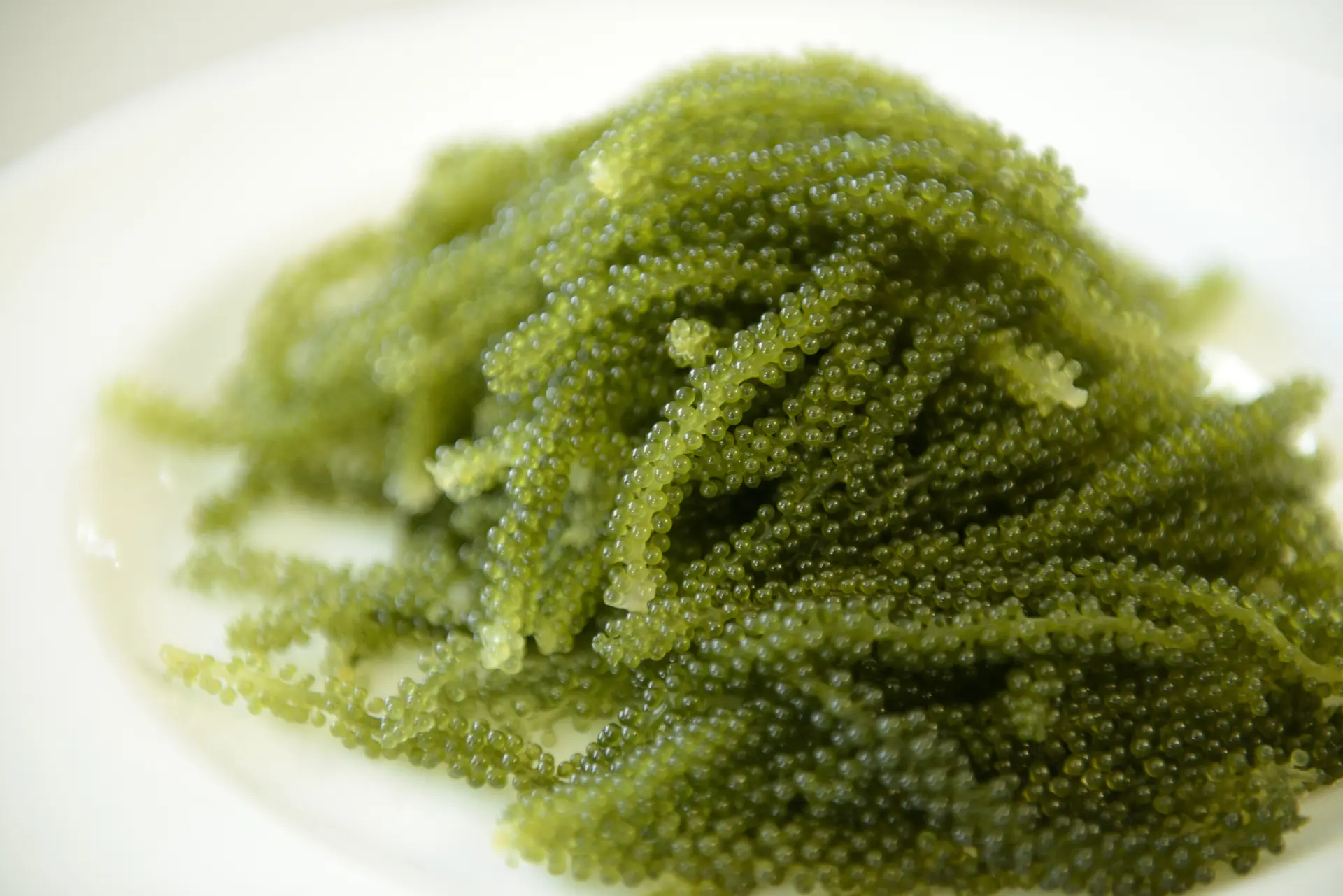
4. Awamori
Kumejima, a famed awamori area, has two distilleries on the island.
The first is Kumejima no Kumesen, one of the largest in the prefecture.
Its flagship label bears the distillery’s name and is crafted by combining the island’s pure natural water with traditional awamori techniques, featuring a smooth mouthfeel.
The lineup is broad, from aged “kusu” to recent products tailored so that younger drinkers find them easy to enjoy.
The second is Yoneshima Shuzo, a small, family-run distillery with a 77-year history.
Committed to handcrafting that leverages Kumejima’s environment, it values careful preparation and extended aging.
Using local ingredients and reflecting the character of the brewery, its spirits deliver profound depth and richness.
While preserving tradition, it pursues innovation, offering fruity, beginner-friendly labels.
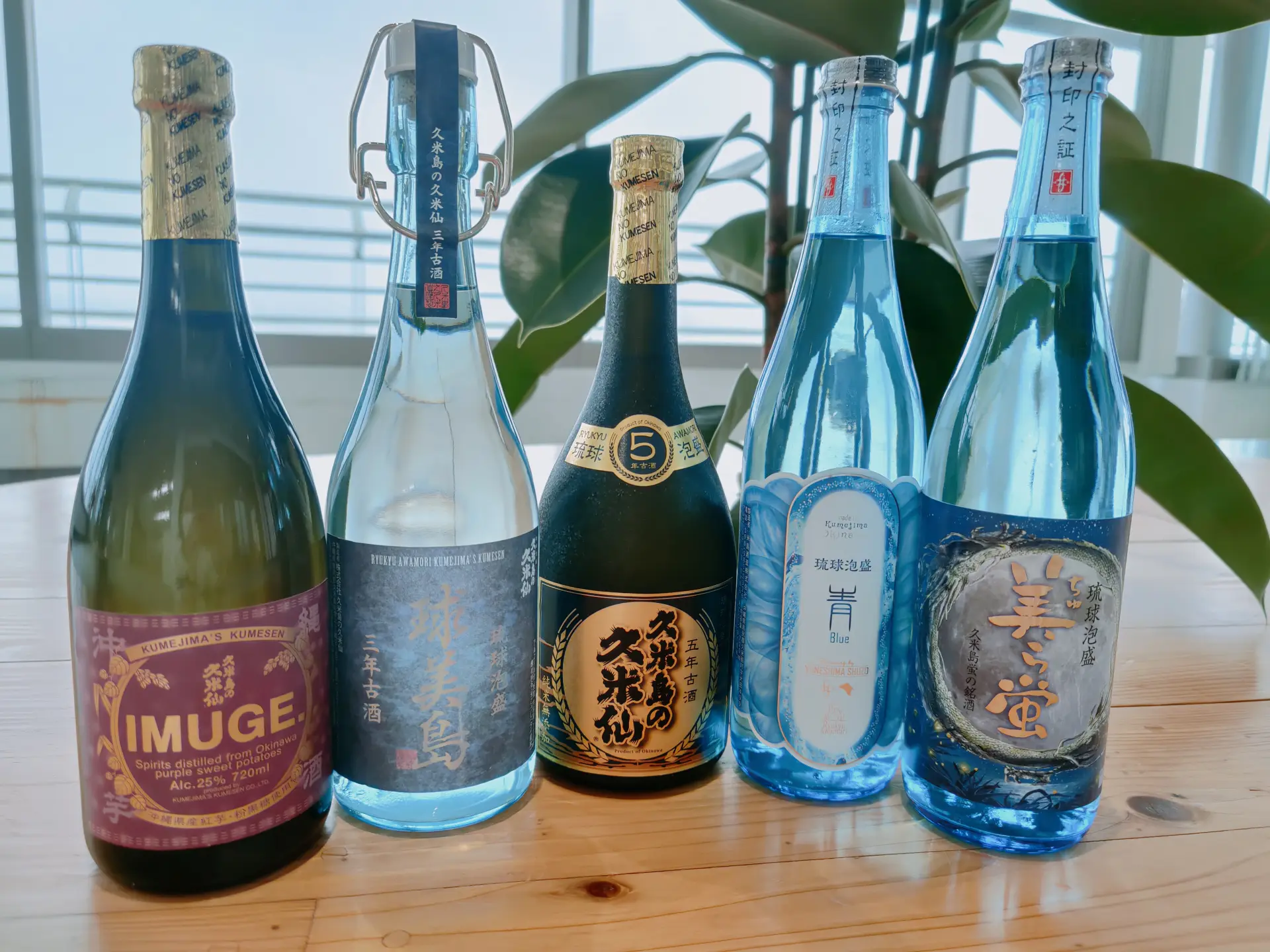
5. Craft Beer
In recent years, breweries producing craft beer on Kumejima have also drawn attention.
One is Brewery Tumugi, the island’s first craft brewery, founded in 2023 on Kumejima in Okinawa Prefecture.
It brews beers that weave together local culture-such as island fruits and brown sugar-to connect people.
Despite small-scale equipment and labor-intensive small-lot production, it offers diverse styles including Mango Saison and Brown-Sugar Porter, with uplifting flavors that lighten the spirit.
It also runs a beer bar and shop that travelers can visit, serving as a hub for mingling and enjoyment.
In addition, distinctive beers that shine in both appearance and taste make perfect souvenirs, such as “KUMEJIMA 612,” which uses deep-ocean water drawn from a depth of 612 m as brewing water; “RED&BLUE,” which employs natural pigments extracted from algae cultured in Kumejima’s deep-ocean water; and “TURTLE GREEN,” with restrained bitterness.
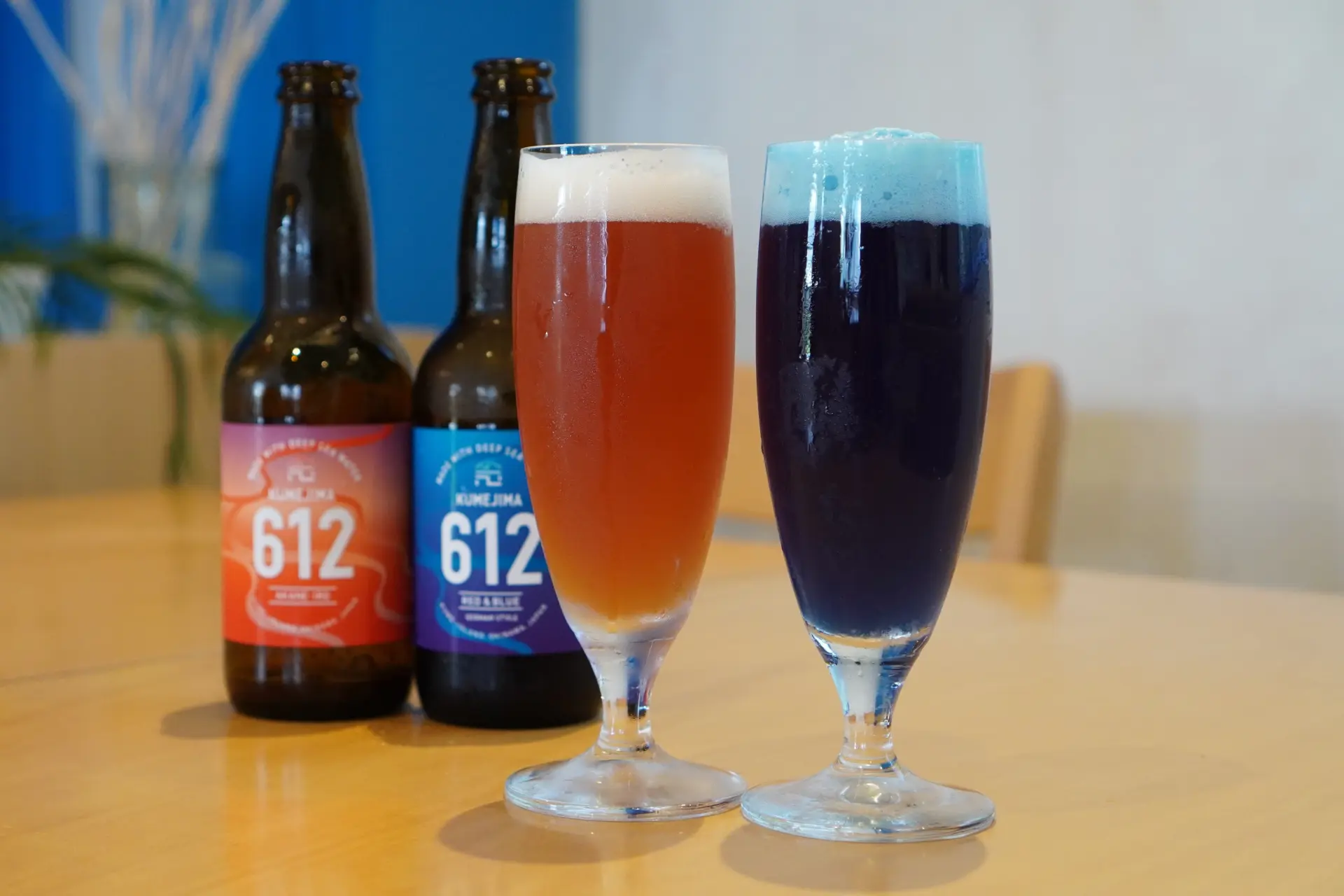
6. Kumejima Akadori Chicken
Kumejima Akadori is a chicken of the French Red Bro strain.
Raised in Kumejima’s natural environment, it is fed a proprietary blend that includes traditional Okinawan plants like turmeric and shell ginger.
Although the rearing period is longer than usual, mixing in awamori lees enhances meat quality over the extended days, yielding a firm, springy texture with juiciness and refined sweetness.
Beyond poultry, the farm also runs livestock and orchards, limiting agricultural chemicals to the minimum and showing strong commitment to health and safety.
The tightened flesh has little off-odor or greasy heaviness, and when cooked, the chicken’s natural flavor rises cleanly, so even simple preparations are highly satisfying.
It is used in many dishes, with popular treatments including karaage, charcoal-grilling, chicken sauté, and soups.
If you see menus using Kumejima Akadori at island restaurants, be sure to try them.
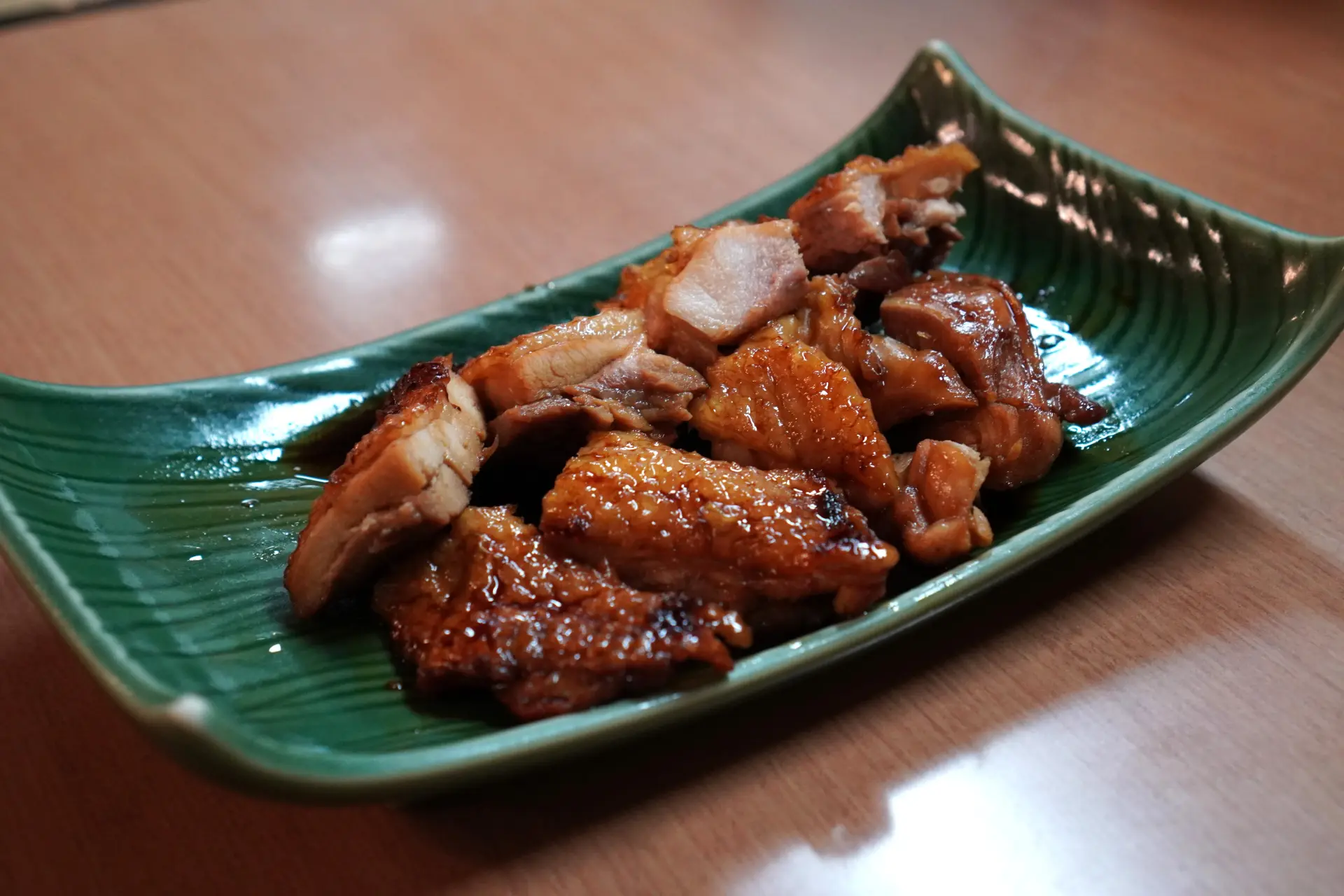
7. Kumejima Keisan-gyu (Post-Calving Beef)
Kumejima keisan-gyu refers to Japanese Black beef from mother cows born and raised on Kumejima that are re-fattened after their breeding period.
Although post-calving cows tend to be undervalued in the marketplace, Kumejima keisan-gyu is carefully finished for over a year in the island’s rich environment, making effective use of regional resources.
With less marbling and a red-meat focus, it is firmer and springier than meat from younger cattle, with deeper, more concentrated flavor, color, aroma, and richness.
The more you chew, the more umami develops, and the lighter fat makes it less likely to sit heavy on the stomach.
Its current limited distribution adds to its appeal.
Representative dishes include juicy, richly sauced hamburg steaks and fragrant, expertly cooked steaks.
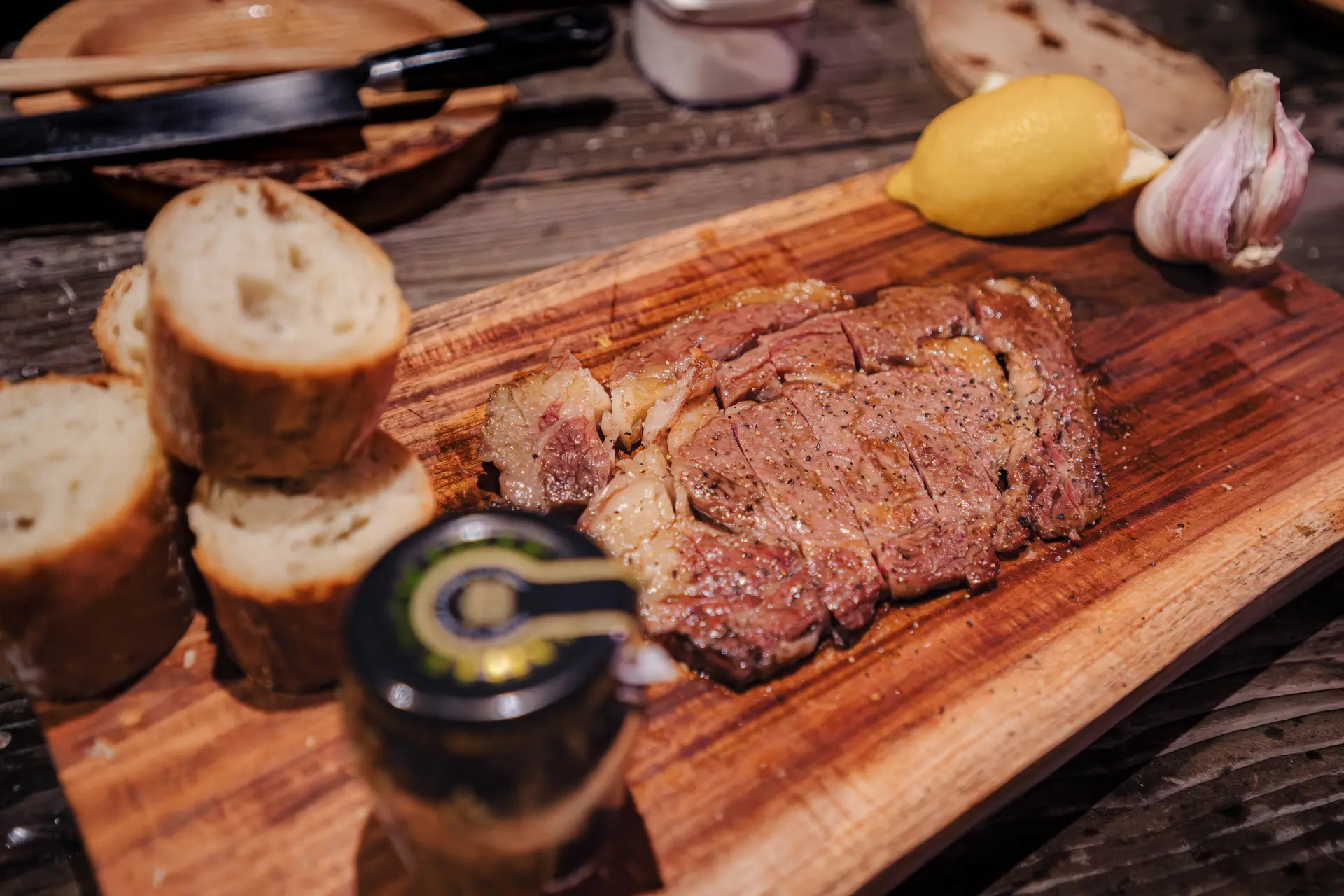
5 Kumejima Events That Spark Encounters With Locals
Finally, here are recommended events on Kumejima.
Each is rooted in the island’s unique history and traditions, allowing participants to experience local culture amid natural beauty.
There is a wide range of fun, and they also serve as venues for interaction between islanders and visitors, so if your timing permits, be sure to go.
1. Sugar Ride Kumejima
Sugar Ride Kumejima is a cycling event held annually in April.
It features sightseeing-friendly courses and local interaction, with multiple routes tailored to participant skill levels.
Its greatest charm is the direct experience of beautiful natural scenery and traditional culture.
Routes span diverse scenes such as white-sand beaches, forest roads filled with blooming camellias, and historic hamlets, letting you savor the essence of Kumejima.
The warm hospitality blends tourism and festival moods, with sub-events the day before (road-bike seminars, steep-slope walks) and a friendship party after the ride where you can enjoy local gourmet.
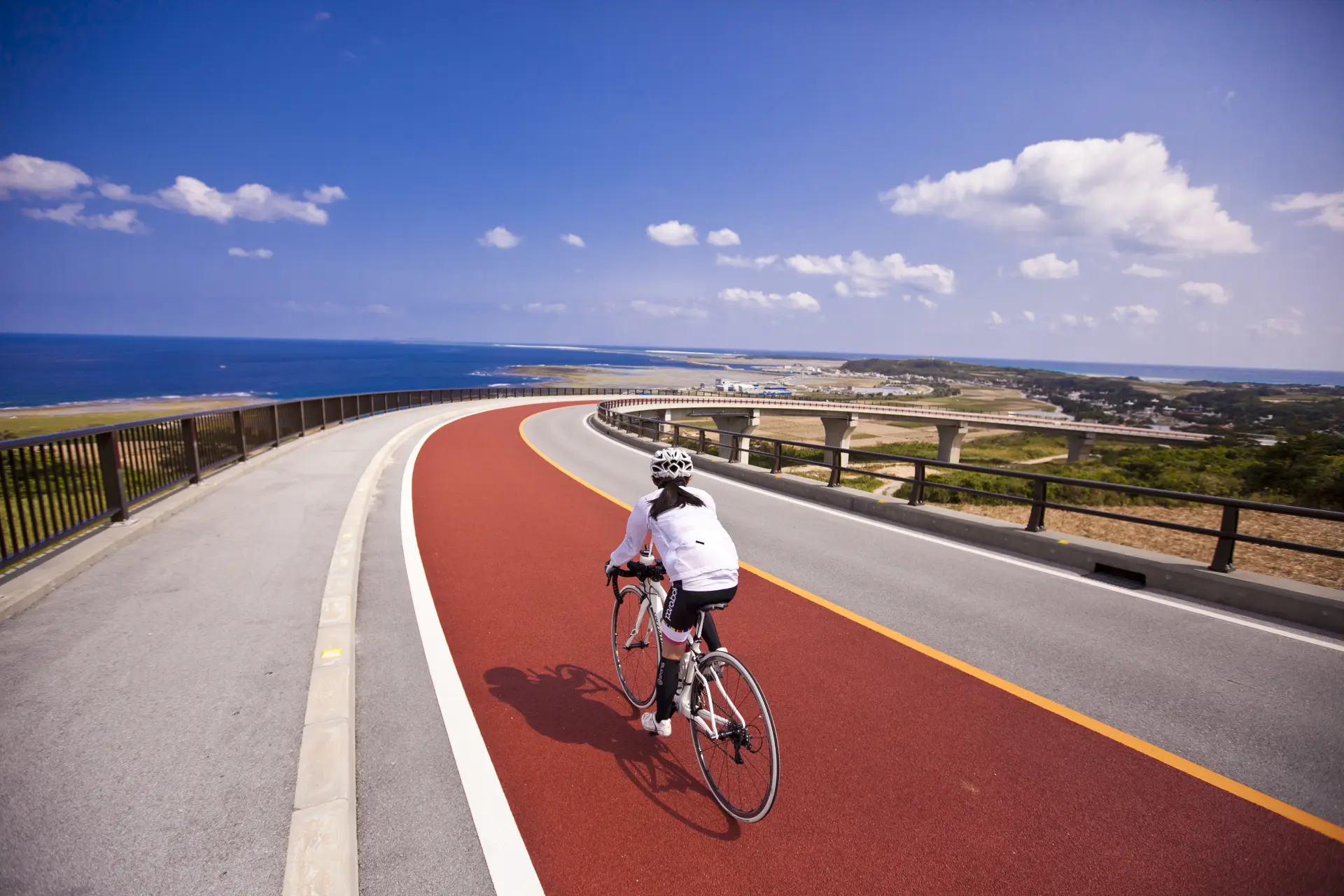
2. Haarii Boat Races
Haarii are traditional boat races held mainly in Okinawa.
Fishermen race in small dragon boats called haryusen, praying for safe voyages and abundant catches in an important local ritual.
The powerful paddling to compete for speed is heroic, and together with the ringing of bells, it is considered a seasonal tradition that announces summer.
On Kumejima, the races are held as community events in Torishima, Maedomari, and Gima, typically from late May to early June.
Because the schedule is set based on the lunar calendar’s 5th month, 4th day (Yukka-nuhi), check dates in advance.
You can feel Kumejima’s unique energy firsthand as cheers and venue excitement combine, and there may be opportunities for visitors to join workplace team races.
Experience the local culture through related performances such as folk-song shows.
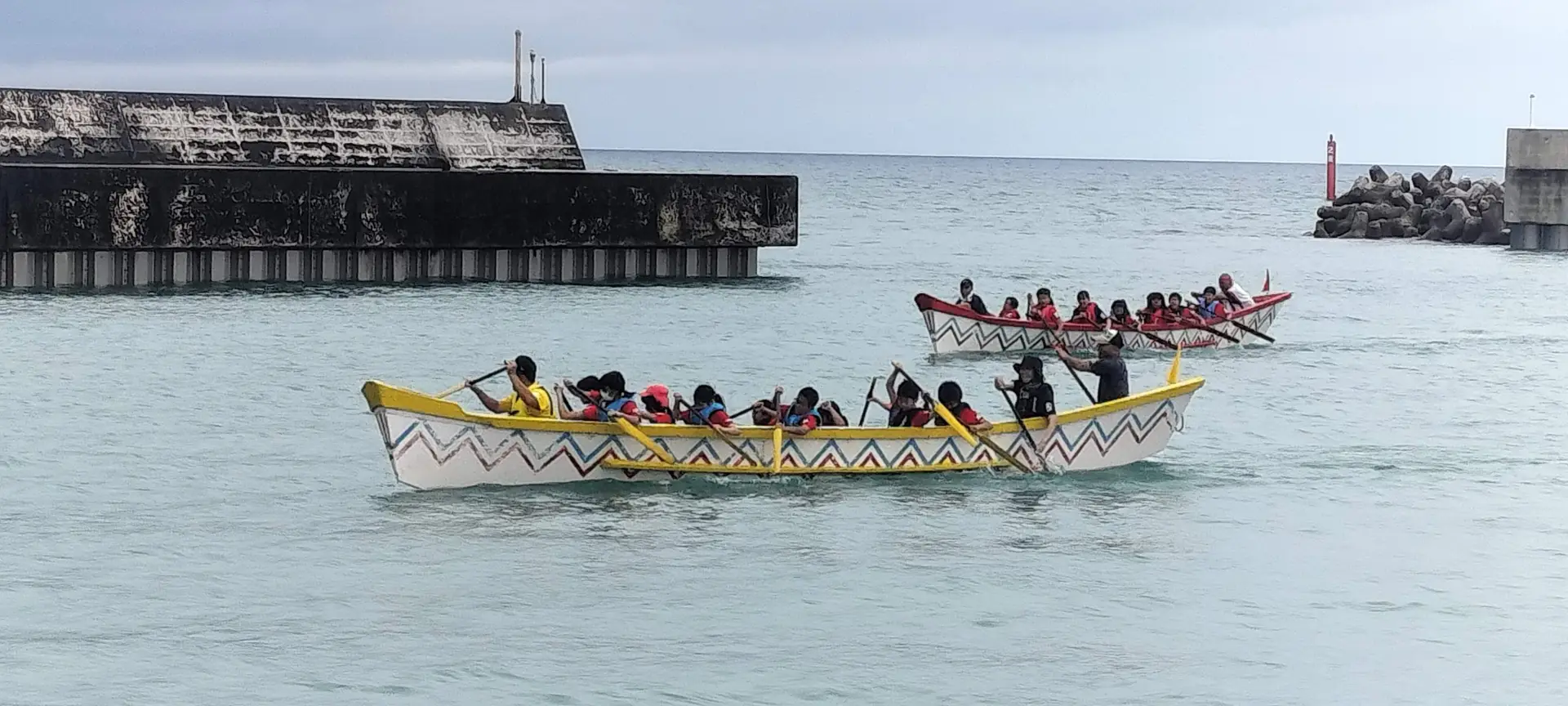
3. Okinawa Sumo
Okinawa sumo is a traditional Okinawan martial art that has continued since the Ryukyu Kingdom era.
Competitors wear jacket-and-belt attire and grip each other’s belts firmly, and start from a right-hand inside clinch to trade techniques.
It differs from grand sumo, which is contested wearing only a mawashi and begins with a forceful clash at the tachiai, and it features its own rules.
A bout is decided when both shoulders or the back of the opponent touch the ground; stepping outside the ring does not mean defeat.
The appeal lies in hard-fought, compelling bouts, with frequent upsets through tactical skill even across weight differences, and huge excitement when big techniques land.
Kumejima is an Okinawa sumo hotbed, hosting five island-wide meets annually, led by the Shana-do Minami-jamon Sumo Tournament (held on the lunar 6th month, 26th day, often late July in the solar calendar).
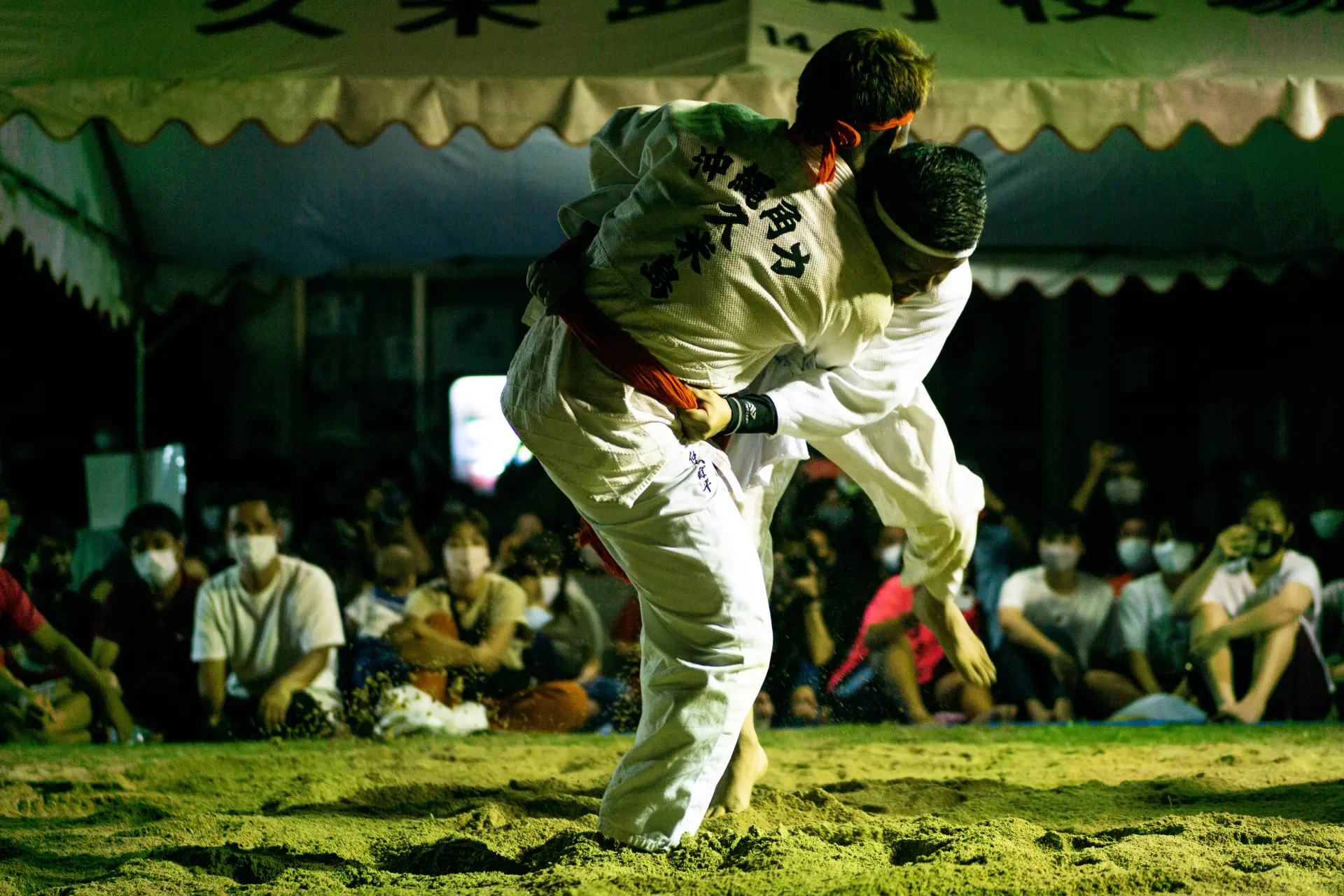
4. Kumejima Festival
Kumejima Festival is the island’s largest event to color the autumn season.
It is held on a Saturday and Sunday in mid-September at Kumejima Town Fureai Park in the island’s center.
It is a festival where tradition and modernity blend, enjoyed together by residents and visitors, drawing large crowds from on and off the island.
Over two days, the island’s marquee event presents a full program-eisa, guest-artist live shows, prize raffles with lavish rewards, food stalls, and fireworks.
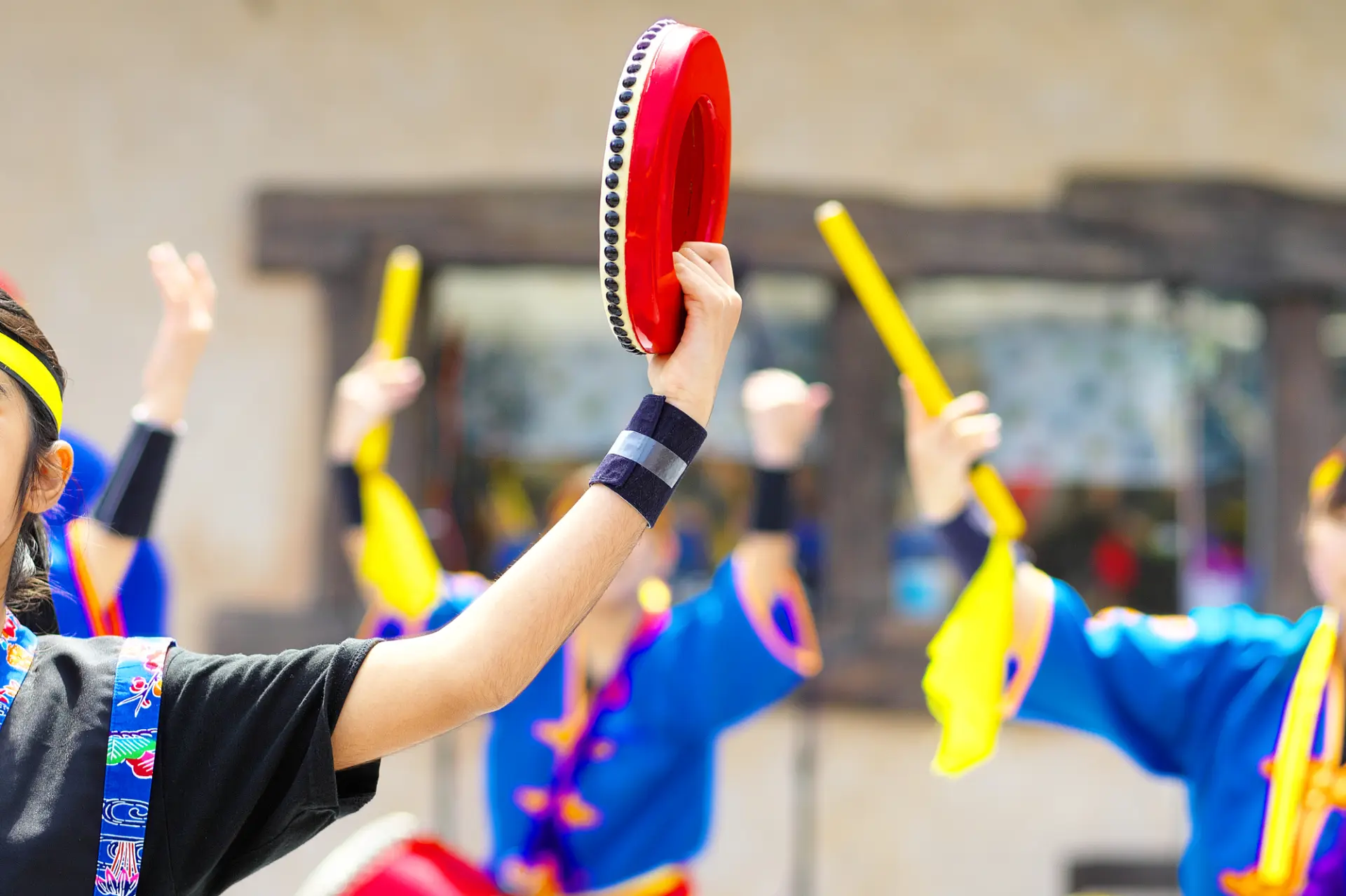
5. Kumejima Marathon
Kumejima Marathon is held in late October, starting and finishing at Kumejima Town Nakazato Baseball Field.
There are five events-full, half, 10 km, 5 km, and 3 km-open to participants from elementary schoolers to seniors.
The course has few ups and downs and lets you enjoy beautiful coastlines and nature.
You will also run amid warm cheers from local volunteers and islanders, creating a friendly, at-home atmosphere.
Many repeat participants come for the post-race friendship party.
Because hotels are hard to secure on the day before and the day of the marathon, book your stay before entering.
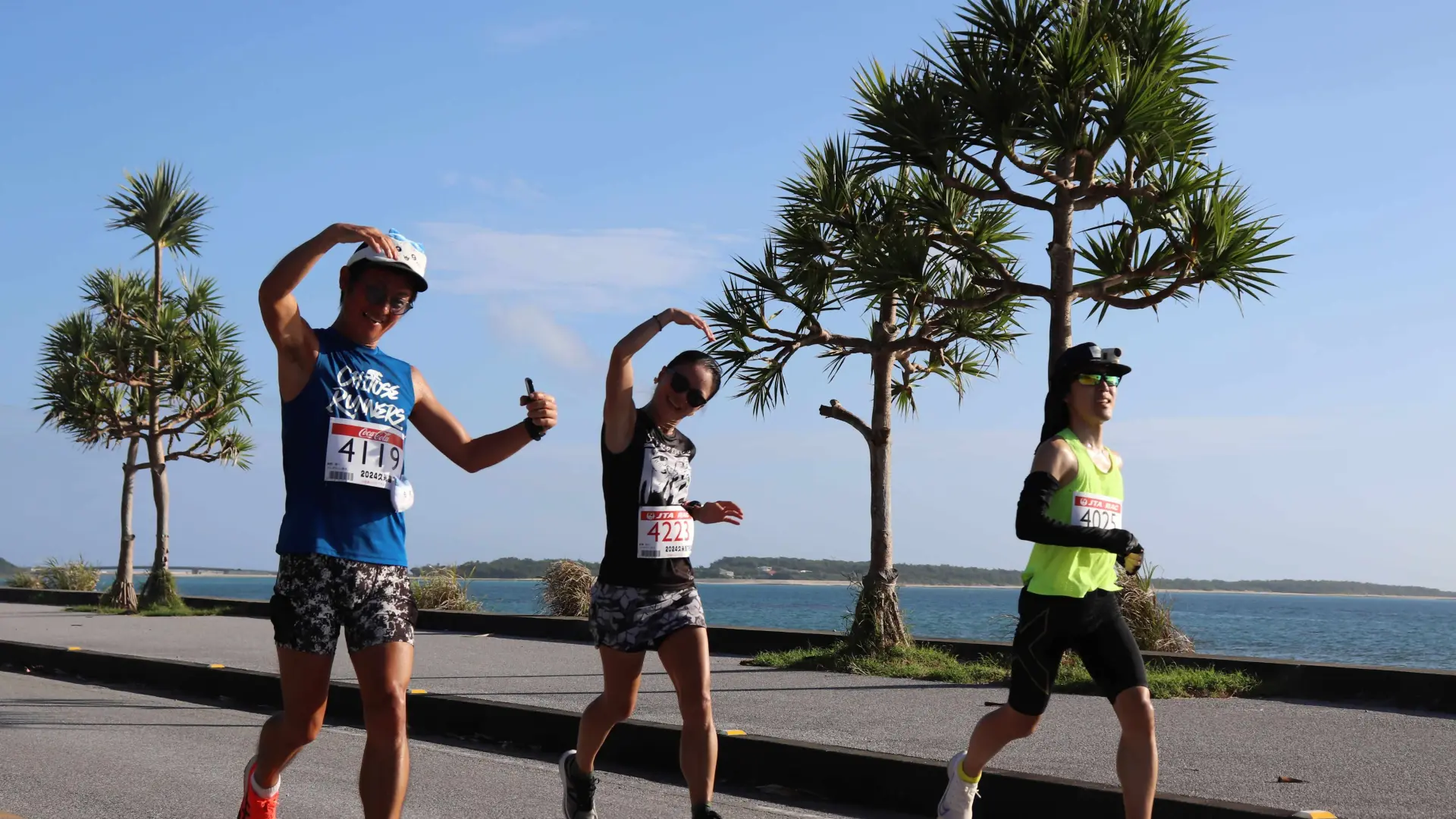
Wrap-up
This guide has introduced highlights and popular spots on Kumejima, one of Okinawa’s most relaxing remote islands.
On Kumejima, where rich history and untouched nature harmonize, you can spend liberating moments away from everyday life amid the island’s gentle flow of time.
With scenic landmarks, local cuisine, and activities in abundance, wherever you go and whatever you enjoy, you are sure to have unforgettable experiences.
Access is also easy-about 35 minutes by plane from Naha Airport-so if you’re intrigued, make the trip and see for yourself.
Did reading this article make you want to visit Kumejima?
Thank you for your cooperation with the survey.
